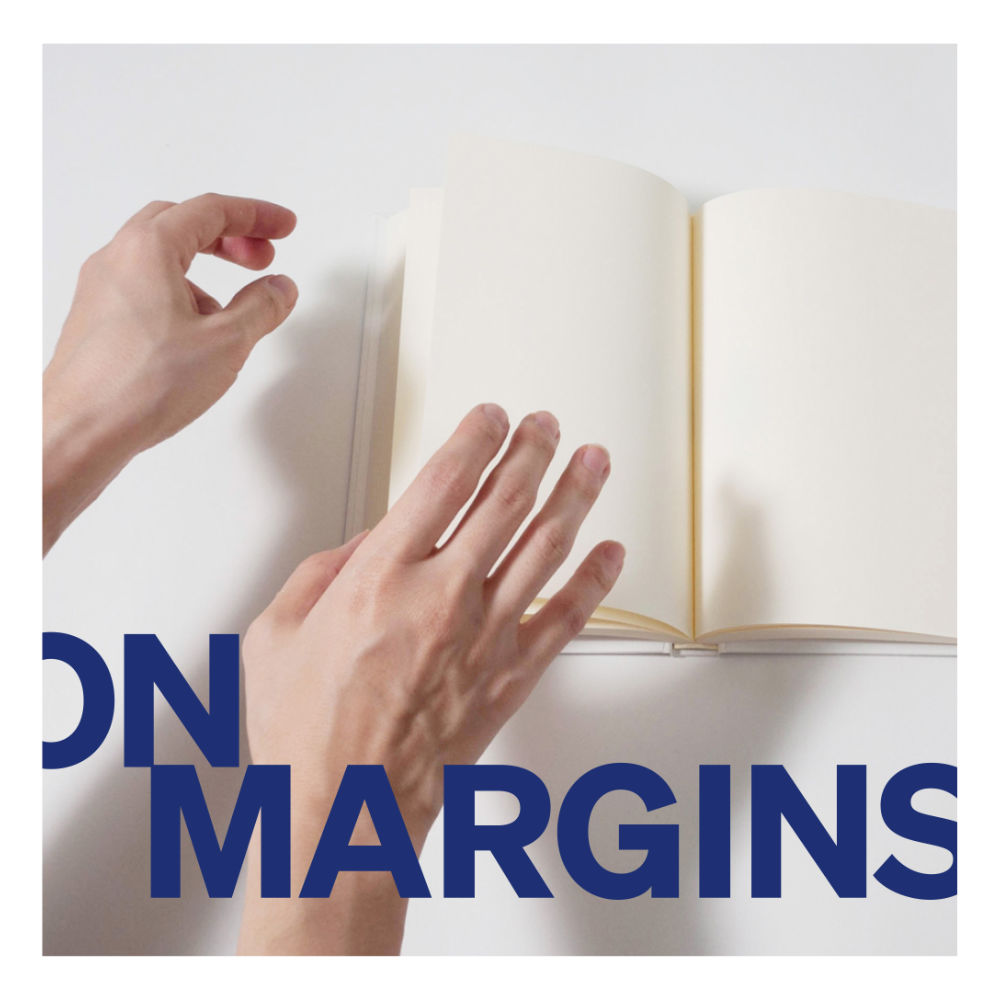On Margins is a podcast about making books and book-shaped things, hosted by Craig Mod.
Subscribe on iTunes, Overcast, Google Play, Spotify, and good ol’ RSS.
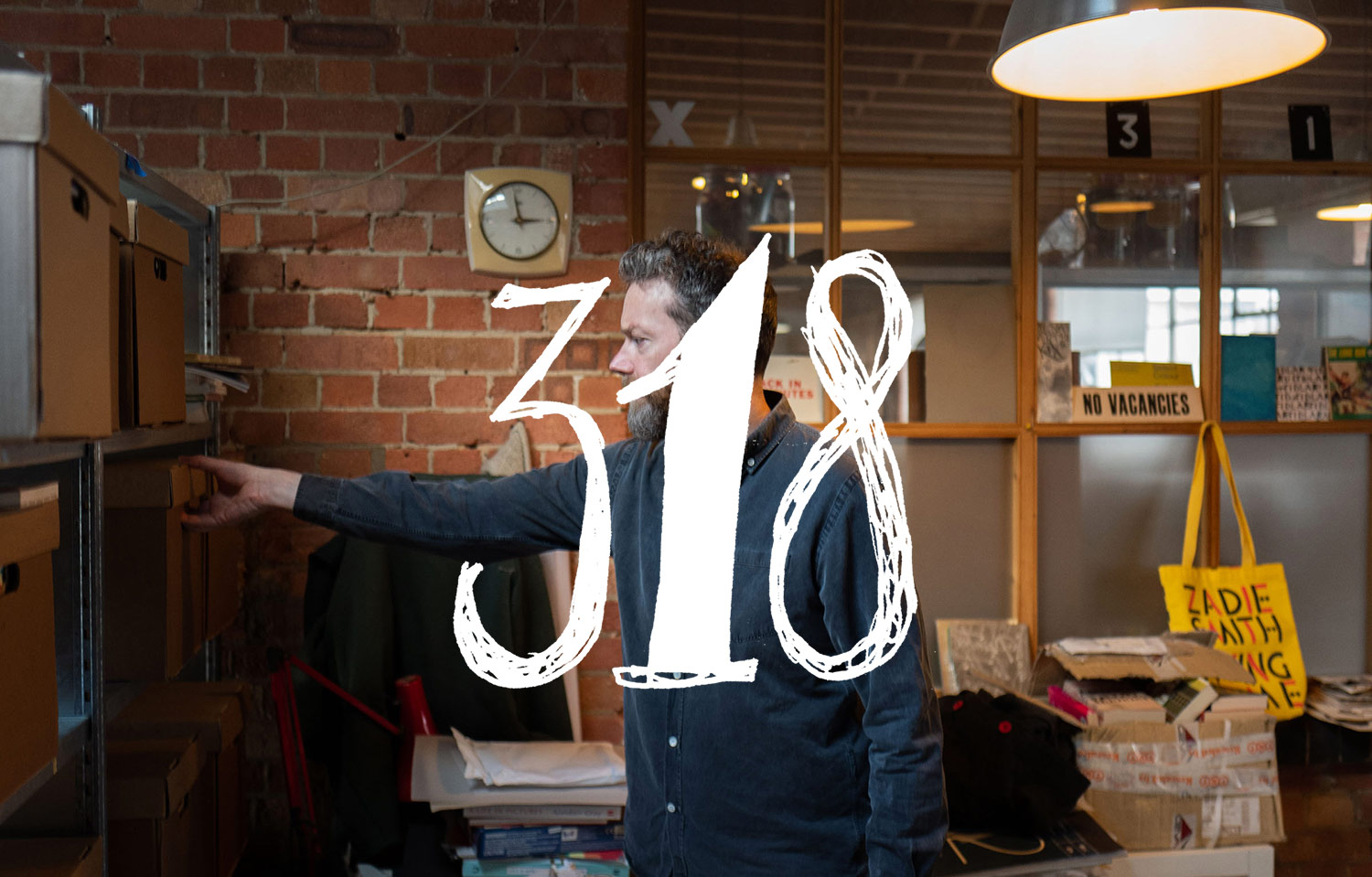
010
Gray318 — Jon Gray's Infinite Covers
Gray318
An interview with award winning book cover designer, Gray318 (Jon Gray).
Show Notes & Links
- Gray318
- Gray318 Instagram
- Corrie Baldauf's Gravity's Rainbow Project
- Gravity's Rainbow
- Sally Mann documentary
- Jonathan Safran Foer
- Tree of Codes
- The Yellow World
- Zadie Smith
- Karl Lagerfeld
- Rodrigo Corral
- MCD Books
- Infinite Jest
- A Death by Stephen King
- America is Not the Heart
- House of Leaves
- Only Revolutions
- Art Space Tokyo
Full Transcript
Craig: You’re listening to On Margins. I’m Craig Mod and this is Episode 10. Today I’m talking with Jon Gray, although if you’re in the book world you know him by his design moniker, Gray318. Jon has designed covers for William Gibson, Zadie Smith, Salman Rushdie, David Foster Wallace, Robin Sloan, and perhaps most famously, for Jonathan Safran Foer.
Gray318: Well, that’s the thing about books, isn’t it? It’s such a basic sort of thing. You can’t quite believe that … I think that’s probably why I still sort of fit in this world because I’m pretty basic, too. My work is pretty basic. The process is quite basic.
Craig: Remember when Jonathan Safran Foer’s Everything is Illuminated came out and it had that gorgeous, messy, handwritten letters on the front? And then everyone and their uncle was making books with that kind of lettering? That’s Jon’s doing. Jon’s been at this for a long, long time. And as you can hear in this interview, Jon is just a straight up lovely human being, kind and self effacing, and warm, and, despite having designed some of the most recognizable and successful covers in the world, humble. He’s a humble dude. I had the pleasure of visiting Gray318 in his studio in London, or rather, his old studio since he just moved a couple days after we recorded this.
Craig: Together, we opened his boxes of books and pulled out some of his best covers to get the stories behind them. You may be thinking, Craig, isn’t it boring to listen to two dudes blather about book covers when I can’t see them? And yes, yes it is boring. Which is why, if you’re listening to this podcast in Overcast you’ll see what we’re talking about appear as the cover art for each chapter of the conversation. So, I highly recommend you use a podcast player like Overcast that supports inline cover art changes. Also, the full transcript for this episode with a bunch of photos is online at craigmod.com/onmargins.
Craig: Now, unfortunately, I have to issue a trigger warning for this episode. I do use the phrase wabi sabi in a non ironic fashion. I know, I know. Really? Wabi sabi? Really? Yeah. I just wanted to make sure you were prepared for that, maybe even felt like a little bit of violence against myself as I said it. So, even considering that, I hope you enjoy today’s episode.
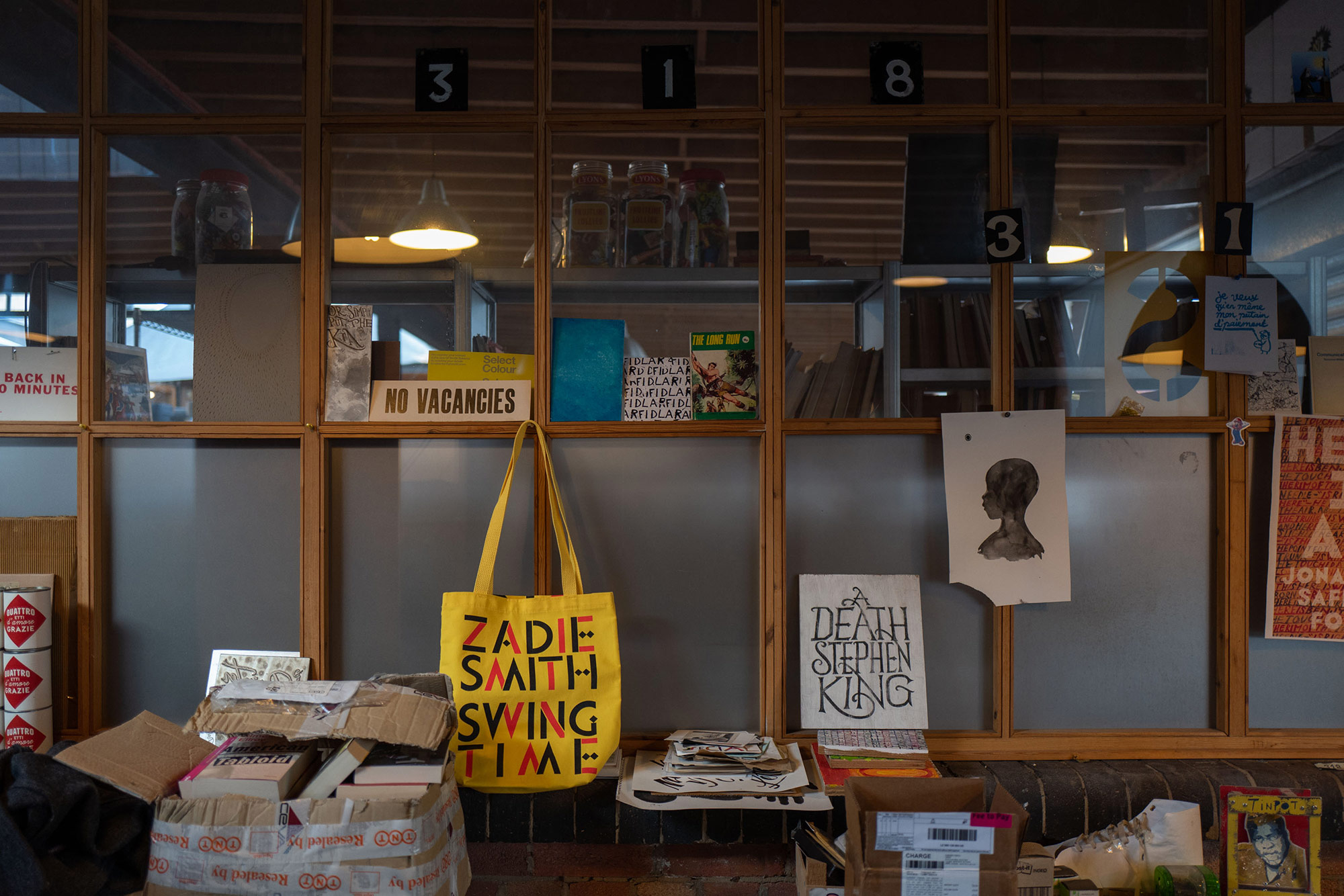
Craig: Hello Jon.
Gray318: Hi.
Craig: How you doing?
Gray318: I’m good, yeah. How are you?
Craig: I’m all right. So, where are we right now?
Gray318: We’re in a spare room of my studio in Debevoise, which is East London. It was an old dog biscuit factory years ago.
Craig: Dog biscuit factory?
Gray318: Then it got converted. Yeah, well, obviously, it’s not still a dog biscuit factory. Yeah, it got converted into artist space.
Craig: Nice, how long have you been in this building?
Gray318: Eight years, yeah, everyone else has been here a lot longer, so 10, 15.
Craig: You’ve been here for eight years-
Gray318: Yep.
Craig: … in this studio. And before this where? Were you working out of your house?
Gray318: Yeah, before that I had a studio in garden that I built.
Craig: Yeah.
Gray318: I was there for two years before I finally went completely mad and ended up having to leave. It just drove me insane being on my own. I felt like … Do you remember David Blaine? What happened to David Blaine, the guy who used to-
Craig: The magician?
Gray318: Yes, exactly. And he…
Craig: Is he still around?
Gray318: I think so. He eats glass now.
Craig: Oh, does he. So at least it didn’t come to that.
Gray318: No, but he used to do this thing where he was suspended in a glass box.
Craig: Yeah.
Gray318: He did this stunt in London, he was suspended in a glass box for 20 days, and I felt like that in my studio. It just felt like I was literally nose against the glass by the end of it, saying, “Yeah, please let me out.”
Craig: I had this image that you were still in the garden studio.
Gray318: Oh, did you? Oh, okay. No, no. I mean I’ve still got all my stuff in there. It’s like a time capsule, but no, I moved back in here.
Craig: This is eight years, garden studio’s two.
Gray318: Yep.
Craig: That’s only 10.
Gray318: Yep.
Craig: But you’ve been doing book stuff for 20.
Gray318: Yeah, 20, yeah. Before that I had another studio further east with Jamie Keenan, another book designer, and another couple of book designers. We had another similar old space. Yeah, that came to an end and before that Random House.
Craig: You were in house?
Gray318: In Random House, with Jamie-
Craig: Here in London?
Gray318: Yes. Yeah, which is, their office is down on the Thames basically. You don’t need to know where their office is. [crosstalk 00:05:10]
Craig: But this place seems great. I mean-
Gray318: Yeah, it’s really good. It’s amazing sort of office in here as well, a Tom Gold, Marion [inaudible 00:05:19], yeah other book designers, illustrators, photographers, it’s great. It’s a really nice sort of shared space. It’s good. But it’s coming to an end, sadly.
Craig: Yeah.
Gray318: We’re all going our separate ways, but-
Craig: Oh, the building is finishing.
Gray318: Yes.
Craig: Wow.
Gray318: I don’t know if you can see but they’re starting to gently file these other buildings, they’re doing the same to this one, unfortunately. That’s what happens in Fort Green.
Craig: That’s true. I think that’s exactly what’s happening.
Gray318: Yeah.
Craig: They’re kicking you out or it’s just the rent-
Gray318: The lease has come to an end and we can renew for double the money, which is none of us can afford.
Craig: Right, right.
Gray318: So I’m moving further into Hackney, so further out east.
Craig: Nice.
Gray318: Yeah.
Craig: Cool. Well I’m glad I got to see that-
Gray318: Yeah, the last days.
Craig: … finals days of this place.

Gray318: Literally, we leave on Monday.
Craig: Oh, no. Oh, wow.
Gray318: Yeah.
Craig: Well, we have a couple boxes of books.
Gray318: Yeah.
Craig: Should we look through these boxes?
Gray318: If we have to, yep.
Craig: Okay. I think this works. We can just hang out on the floor. It’s like being in Japan.
Gray318: Yeah.
Craig: We’re sprawled out on this old hardwood floor that was once covered in dog biscuits.
Gray318: Yeah, exactly.
Craig: We’re going to cover it in books. Yeah, let’s see.
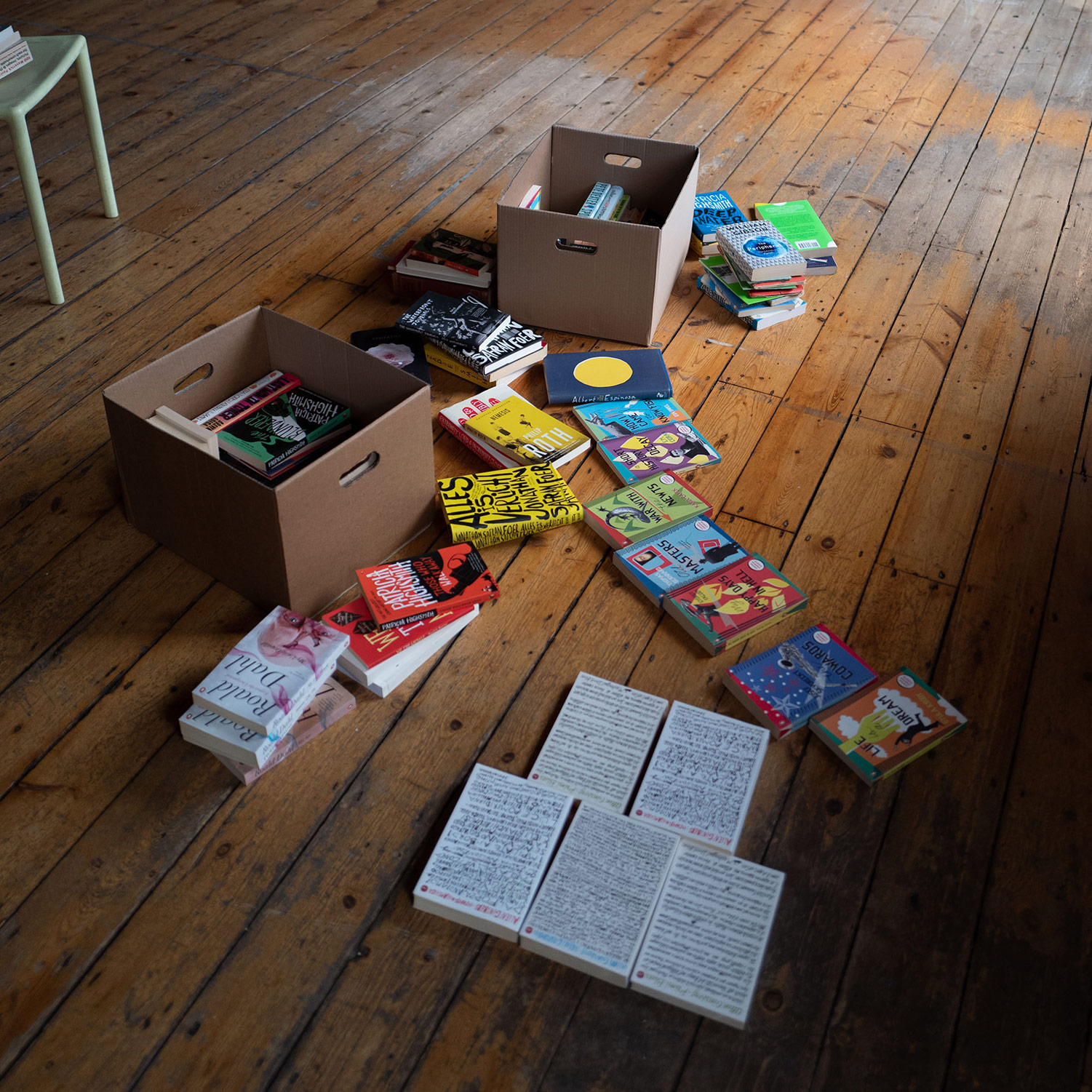
Gray318: What are we going to do?
Craig: What do we go? Yeah, what do we got going on in here?
Gray318: Okay, all right. So that is, that’s Allen Ginsberg.
Craig: Yeah.
Gray318: Do you know what, I can’t even remember what the English title is, that’s how bad I am. Can you read Italian?
Craig: No.
Gray318: Okay, anyway, that’s a series. I did a series of Allen Ginsberg books for a publisher in Italy. And I had this idea, I think this thing with [inaudible 00:07:20] books, I never know what to put on the front, quite, because they want something that is abstract, and I don’t know. I have no ideas for that at all. I decided, instead, I would put a whole poem on the front of each book done in a different script, done in a different font. It sounded like an interesting idea when I started. But of course, I don’t read Italian or speak Italian. I had hundreds of spelling mistakes and errors and had to redraw over and over again. It was actually quite a frustrating idea. But it was a nice series.
Craig: It’s interesting, too, because all the poems are in English. Are they?
Gray318: No, I think there’s a mix-
Craig: I see. I think it’s one to one. The facing pages are Italian.
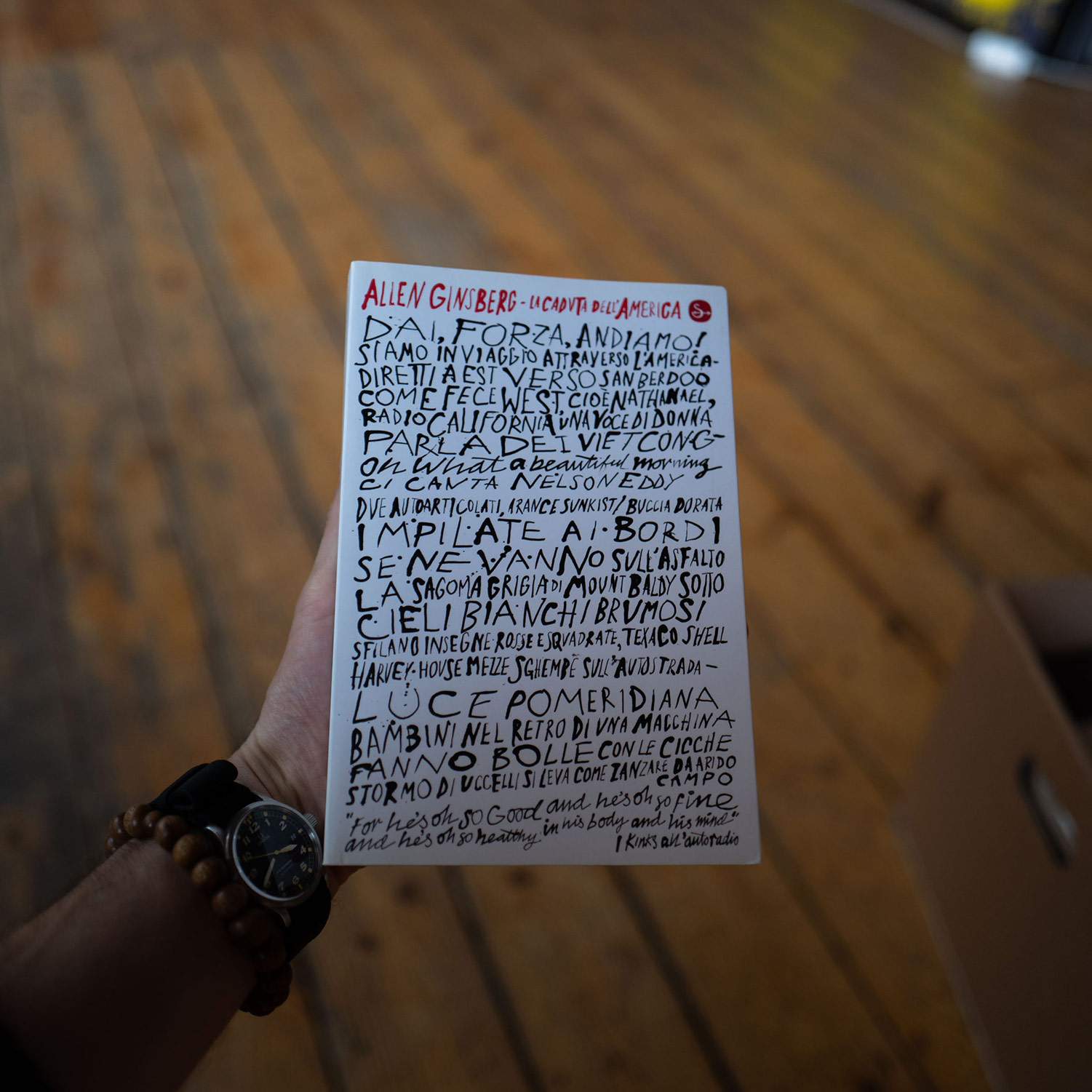
Gray318: Oh, I see, right.
Craig: That’s smart.
Gray318: I should know that. I should have looked inside. Yeah.
Craig: How much reading do you do before? It depends on the book? Some books, do you-
Gray318: No, most of them I really try to read. I don’t obviously, for obvious reasons, if I’m working for a foreign publisher I tend not to, unless they can provide me with the English text. They could have done in this case, but I probably, I’ve read [inaudible 00:08:37] but it kind of didn’t matter because I didn’t want the book to be summed up by one particular poem, anyway. I wanted it to have the feel of his poems, rather than a poem.
Craig: Also, you were thinking in terms of series, right?
Gray318: Exactly. Yeah, so there were five of those.
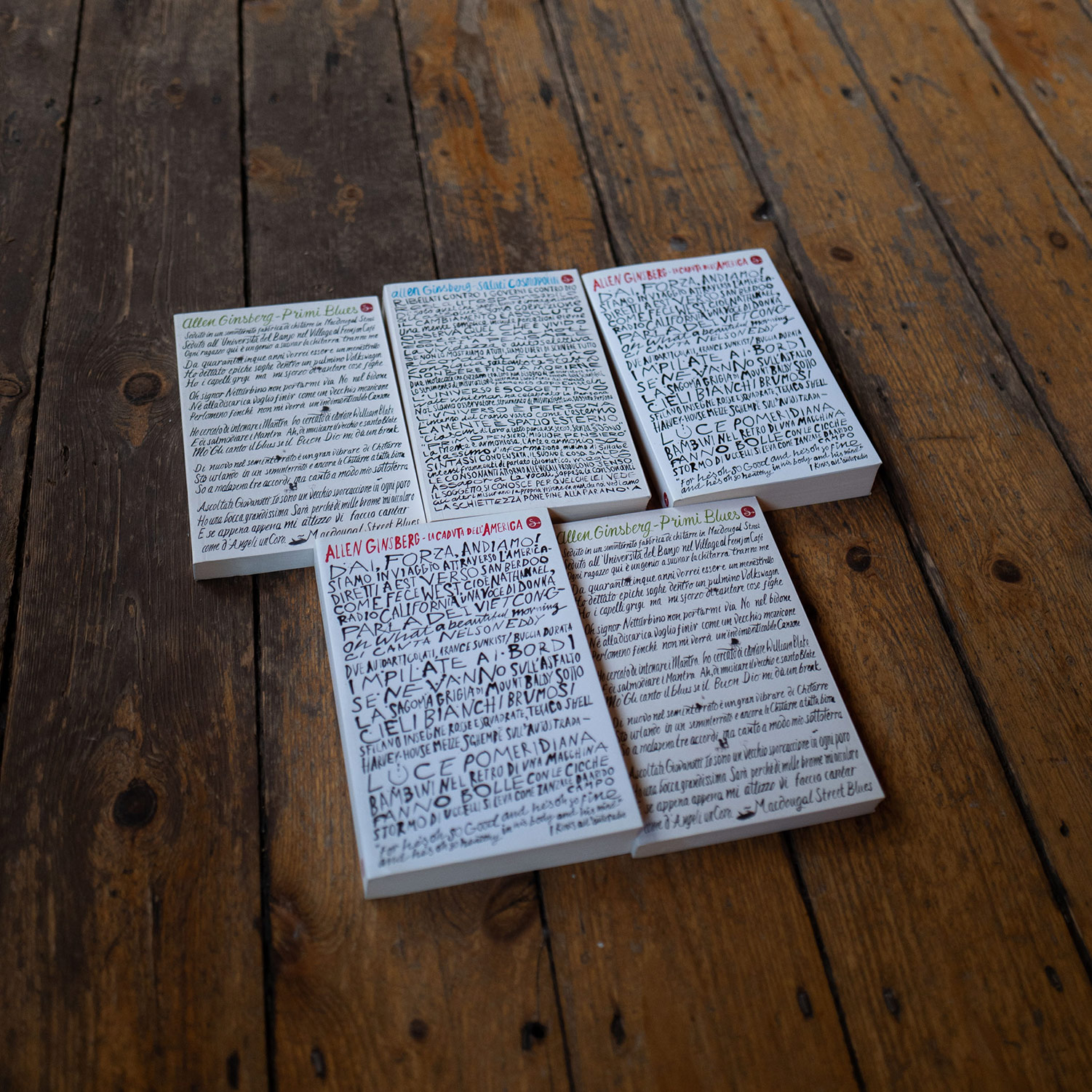
Craig: What about, you did Infinite Jest, Pale King.
Gray318: Yep.
Craig: Did you make it through those?
Gray318: I’ve tried three times to read Infinite Jest and still failed. I got a little bit further each time, which I feel, is maybe one day in my retirement, I’ll get through the whole thing. But no, I have to confess, no. Have you?
Craig: No. I haven’t even tried.
Gray318: Okay.
Craig: I love his essays and I feel like that’s about all I have the stamina for. I feel like it’s like running a marathon, Infinite Jest.
Gray318: He used dedication of time, I know it’s an awful thing to say.
Craig: Yeah. Gravity’s Rainbow falls in the same category for me. Have you done it?
Gray318: Tried it. I’ve tried it. I designed it, I’ve tried to read it.
Craig: I have been carrying Gravity’s Rainbow with me for 20 years now.
Gray318: Yeah.
Craig: Yeah, I bought it in high school and it’s just come with me everywhere as this physical manifestation of who I want to be, the person who can read Gravity’s Rainbow.
Gray318: It’s also this slight fantasy of time, isn’t it? It’s having this chunk of time where you’re going to, often these books that I categorize in my head, it’s like for retirement or something. Or holiday, so it’s like, “Oh, when I’m on vacation, yeah, I’ll take Ulysses, and I’ll read the whole thing.”
Craig: Right.
Gray318: It never happens.
Craig: Yeah, well, I also feel like those are the kinds of books that benefit from university.
Gray318: Yeah.
Craig: Having a professor there talking you through it. There’s a density that attacking on your own is hopeless.
Craig: All right, we have so many books in here. How many have you done in total? 18,000 books?
Gray318: Do you know what? I’ve got no idea how many books I’ve done. Since I’ve been freelance, I’m on to my 350th invoice.
Craig: Okay.
Gray318: If you think of that, then some of those invoices will be for multiple covers. Do I mean 300? Do I mean 3000?
Craig: I would think 3000.
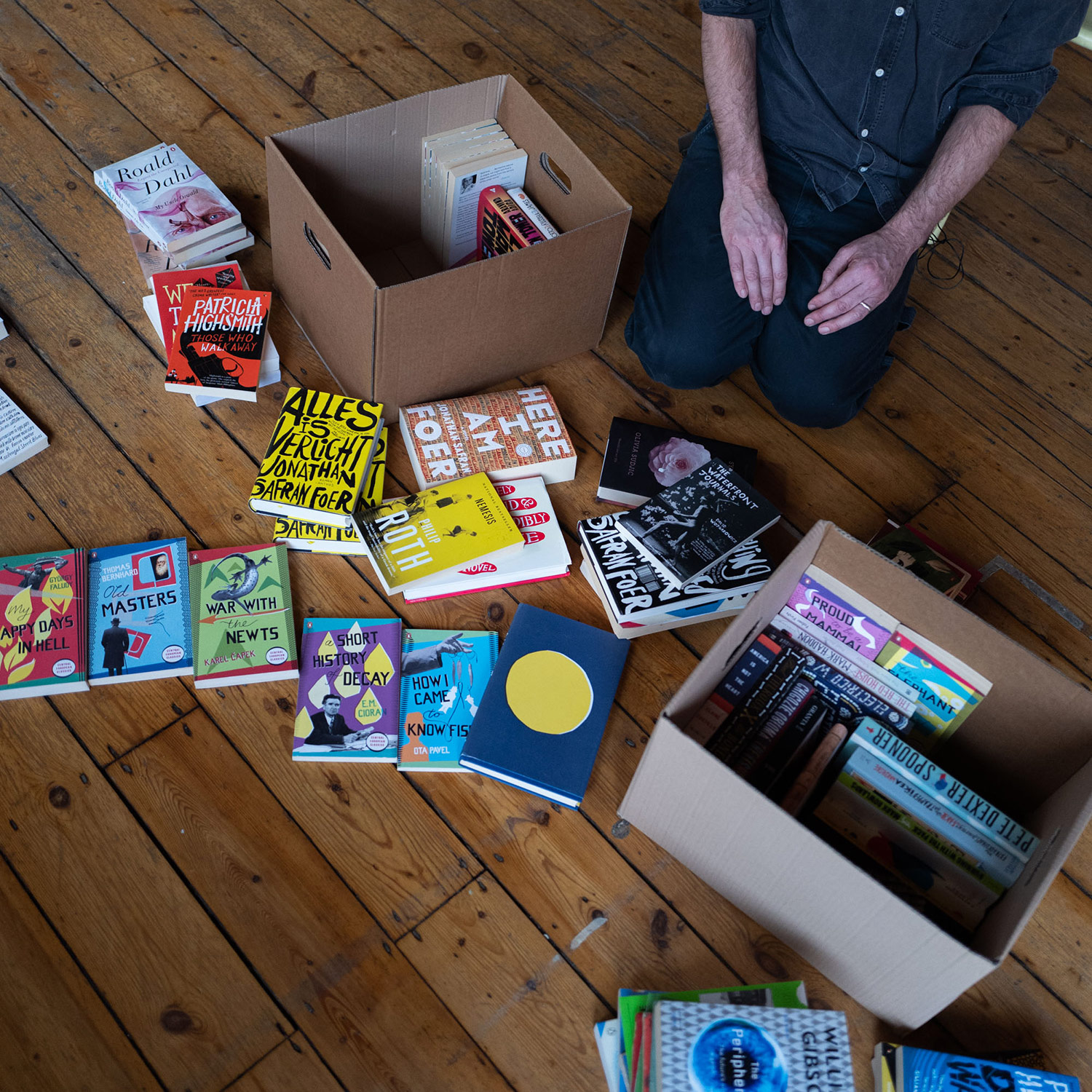
Gray318: Yeah, maybe that’s so.
Craig: You’ve been freelance for-
Gray318: Yeah, can’t be 200. What am I talking about? Sorry, that’s lunacy, yeah. Cut that bit.
Craig: 3000-ish?
Gray318: Yeah.
Craig: We have a couple things here that just popped up. Kiss Kiss.
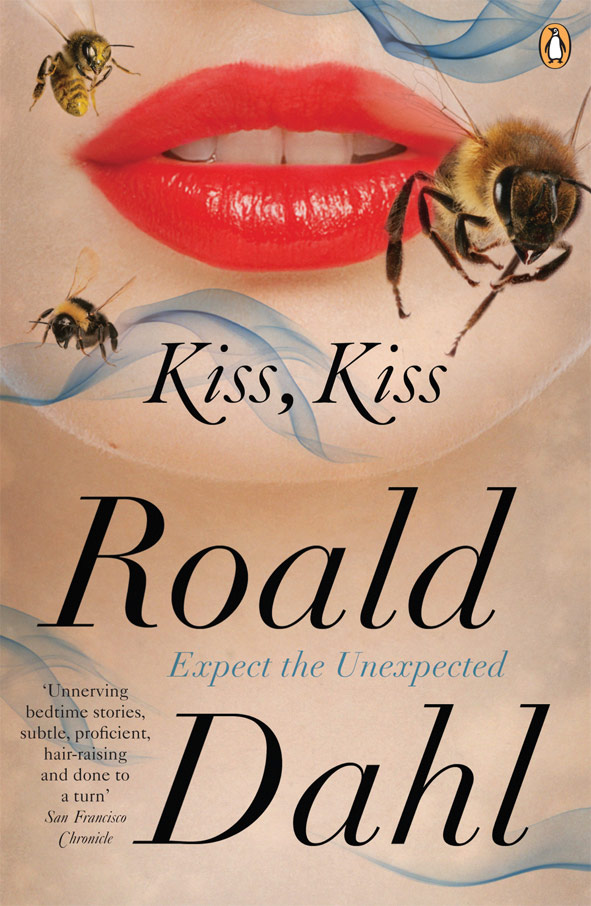
Gray318: Yeah, this is for Penguin. This is the Roald Dahl backlist, which is, I probably did three or four years ago, maybe five now. Yeah, what an amazing job. What an amazing writer. Yeah, it’s just this whole backlist. I set this little brief for myself which was each cover would be made up of two photographs sandwiched together in a weird juxtaposition. In this case, this is Kiss Kiss, so I’ve got wasps coming out of the mouth.
Craig: Very different style than a lot of the others.
Gray318: Yeah, I’m quite conscious, or have been at times. I don’t want to get pigeon holed as being one particular kind of designer, or the go to guy for hand lettering. For awhile there that was people came to me for. They wanted some kind of hand drawn font and I just got to this stage where I thought, this is not where I want to be. I don’t want to be considered someone who solves problems the same way every time. I made a conscious shift away from that. Yes, I do that stuff still, obviously, because it sometimes it fits a brief and if it answers a problem then I’ll use it. Then other times I will do a punigraphic response or I’ll use existing fonts and I’ll use photography. It’s whatever fits, really.
Craig: And so here we have … This is interesting. This is Foer book, Jonathan Safran Foer, but it’s the Visual Editions book of his that I forgot he even made. Forgot that he did this book, Tree of Codes.
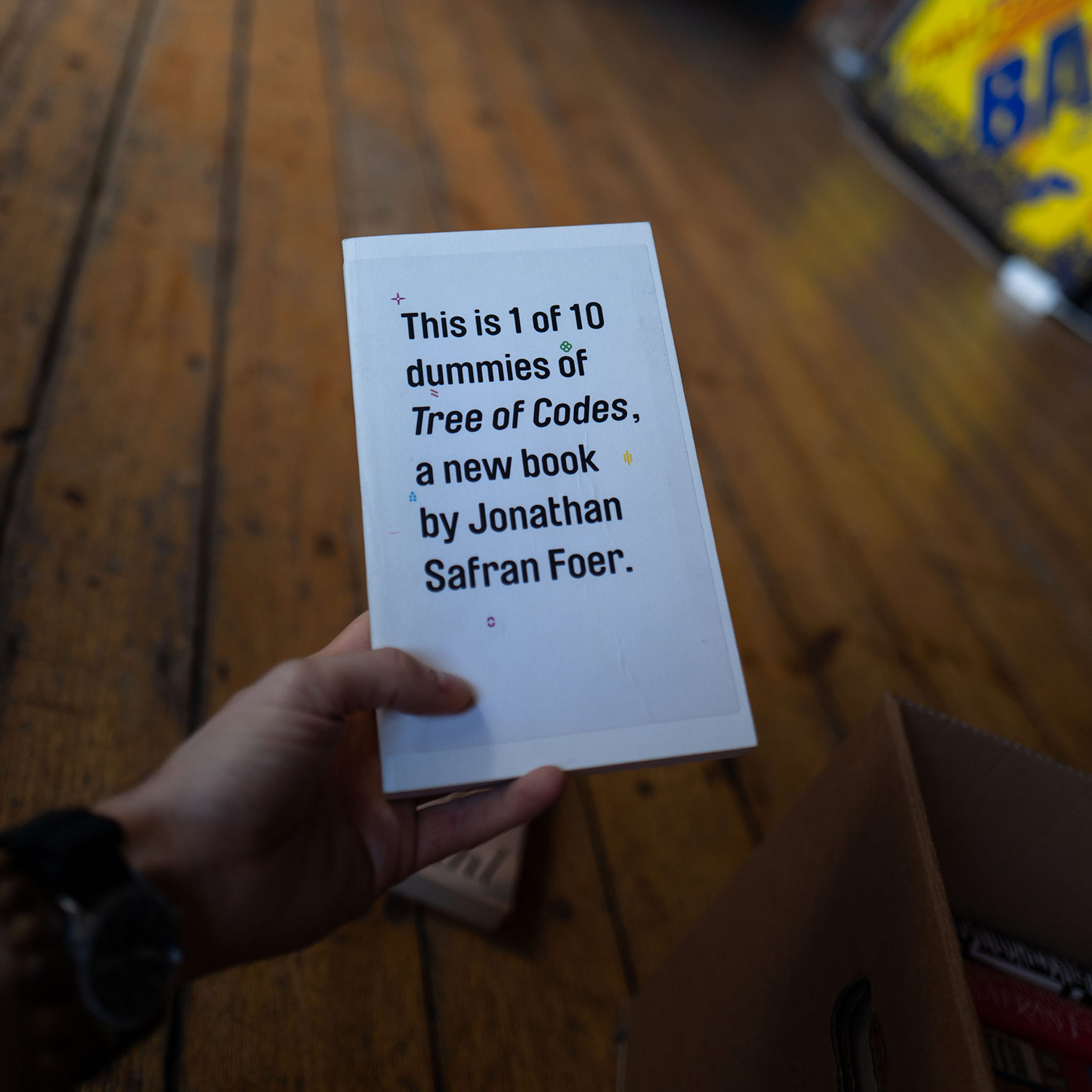
Gray318: Yeah.
Craig: Was this the first book that Visual Editions did?
Gray318: No, second I think.
Craig: Okay. I remember being pretty shocked that they had pulled him in.
Gray318: Yeah, no completely.
Craig: That’s a big get, right?
Gray318: I think it was, he had this idea for a book and I think no other publisher would touch it. It was too much. It was too big for them to handle in terms of print because he wanted to take the original … God, what was the book called?
Craig: Tree of [inaudible 00:13:42]
Gray318: Street of Crocodiles.
Craig: Street of Crocodiles.
Gray318: The book Street of Crocodiles, he wanted to take that novel and then to cut it out, cut pieces out from the text and form a new text, which was his book, Tree of Codes. I think every other publisher just looked at that idea and completely bolt. Apart of Visual Editions who is a saw a total gem of a challenge and did it. Yeah.
Craig: I mean, this book, it’s crazy. You open it up-
Gray318: Yeah, they’re completely crazy, yeah.

Craig: This is completely chopped up. We’re looking at, this is a dummy. Were you involved with innards as well, here?
Gray318: No, what happened is that Sara De Bondt Studios did the entire insides and the cover, but then I think for some reason either Jonathan or Visual Editions weren’t convinced that the cover was how they wanted to sell him or how he wanted to be seen, so they asked me to have a go and then ended up liking what I had done and ended up going with it. I’ve actually always felt slightly guilty about it because I feel like it should have been Sara De Bondt Studios who did the cover because they did the insides. It should have been their whole package.
Craig: What did it end up as, this is just the dummy.
Gray318: Do you know, I’m not even sure there’s a copy in here. I think maybe my copy’s at home. It just ended up as a series of dots, basically. A series of very small dots painted, and then just a bit of text that I’ve used and then a [inaudible 00:15:22] something, I can’t quite remember what I did. Actually, no, I scanned some old books. That’s it, all different old books and had this sort of old text running through these dots. I don’t know, perhaps you can find an image to …
Craig: It’s completely, it’s-
Gray318: It’s a crazy book.
Craig: I don’t even know how to read this. It’s just all these dye cuts.
Gray318: I think that was the original before they’d got to the text actually making shape. I think visual dummy two you can start to read, I think.
Craig: Yeah, a little bit.
Gray318: Yeah, a little bit, it’s not easy.
Craig: Everyone warred as children. Yeah, no. Geez. It’s very interesting. It reminds me Danielewski’s only revolutions. Remember that? Do you know that one?
Gray318: No, I don’t.
Craig: Do you know he did House of Leaves. You know that book, yeah?
Gray318: Yeah, yes I do.
Craig: He’s only really done two books, I think, as far as I know. He did House of Leaves and that was kind of a cult super hit, this was 20 years ago.
Gray318: Yeah. I’m trying to think what the cover for that is. Is that … No, I can’t remember
Craig: I can’t remember either, but it was terrifying, that book.
Gray318: No, I never read it.
Craig: Oh, yeah, I read it and I remember it was very, yeah, it really stuck in the mind. It’s about this house that they keep measuring it, the inside and outside measurements don’t add up. It’s expanding and they can’t tell why. Then there’s this other backstory. But the second is a follow up to that, Only Revolutions, was equally, weirdly incomprehensible in some ways. You have to read the book. You have to keep flipping the book over. It was two stories that were coming together in the middle of the book and then going on.
Gray318: Mind blowing.
Craig: Lots of difficult design stuff going on there. We got-
Gray318: Yeah, carry on thinking.
Craig: Looking at this box. We got this Zadie Smith stuff, Swing Time.
Gray318: Yeah.
Craig: What’s going on here. I feel like-
Gray318: There’s another-
Craig: Yeah. NW, Zadie Smith, NW. I feel like the Swing Time font somehow almost came to be branding.
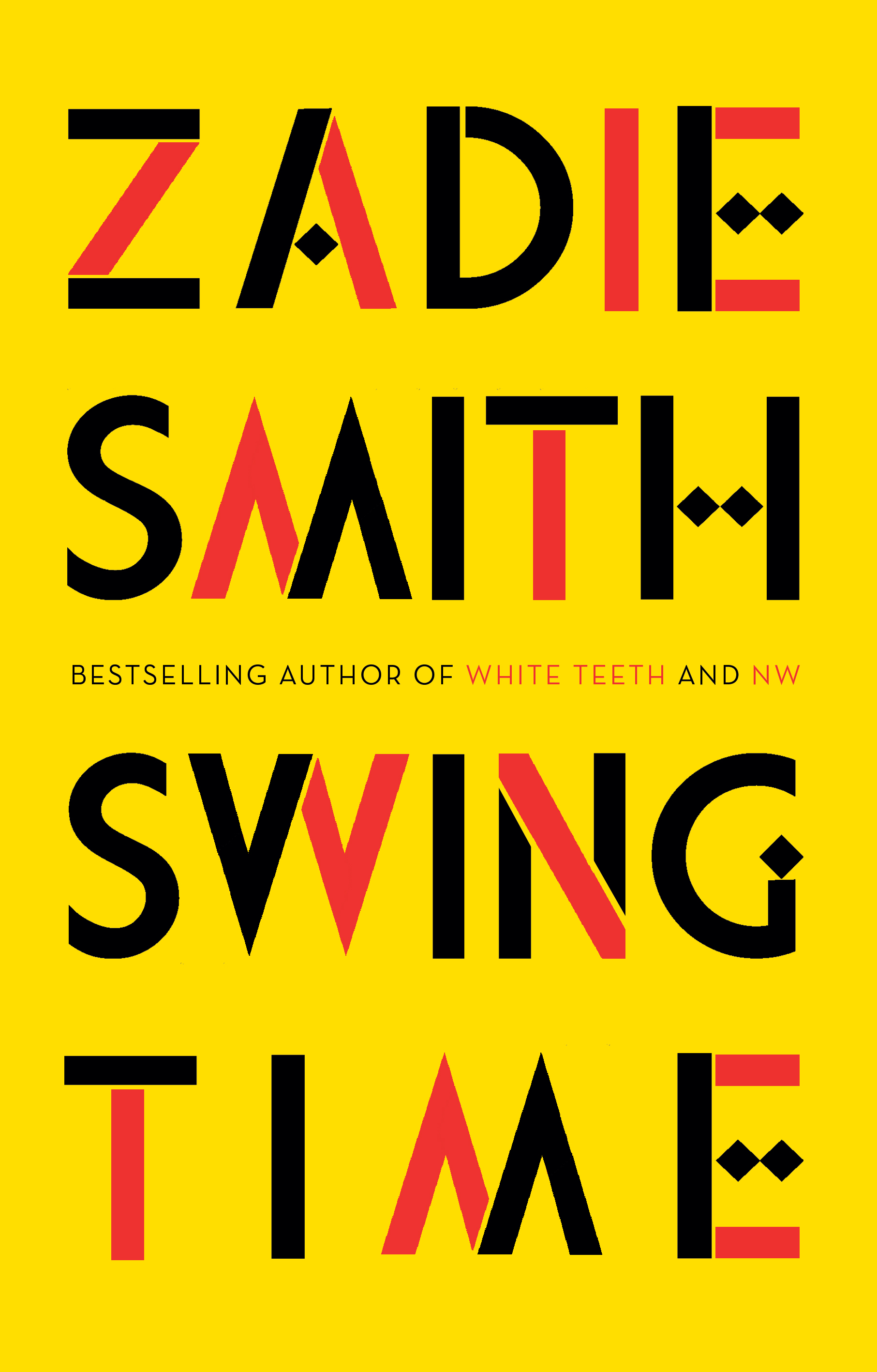
Gray318: Yeah. I think there’s a … I don’t know whether we’ve done that with any of other Zadie Smith, but yeah, it was very much like, “We’ll just use that font.” I just took another font and I’ve kind of messed around with it, added some sort of deco touches to it. Yeah, they did bags and t-shirts, and all sorts. Yeah, it did.
Craig: That’s an interesting thread, right? The only visual component of a book. I was reading an interview and you described the book cover as a travel poster to this place.
Gray318: Yeah.
Craig: I think that’s a great description of it. It either pulls you in or doesn’t pull you in. You can read all the reviews, but then when you pick it up it’s also the thing that maps onto your mind as the visual imprint, the stamp of what the book is.
Gray318: Exactly, yeah. It’s the front door, basically. It’s an invitation into another space, I suppose.
Craig: But it’s also, to be crass and markety, it’s also the main point of branding.
Gray318: Yeah, it is.
Craig: You can define an author’s feel through that.
Gray318: Yeah. I think that’s why probably recently a lot of covers feel like they’re getting simpler and simpler. It’s becoming almost like a logo because it has to work like a logo at different scales. You’ve got clearly online, you’ve got a billboard, you’ve got the book itself. I do feel like there is this sort of a simplification in a lot of instance. Which is good, but then you need … After a while, then that becomes, “Oh, we need something new. We need to attract something another way. We need to not just use these logo types.” I feel that started from me when I did Everything is Illuminated, I feel like that was the first tight as image, it was a branding almost in itself. I hate using the word branding, by the way. Sorry.
Craig: No. Yeah, it’s crass because the whole point of literature is to be above that. To not be thinking about … I’m sure Jonathan was not thinking about how to market this book when he was writing it.
Gray318: No.
Craig: So when you start applying those words to it, it feels like you’re dirtying it a little.
Gray318: Yeah.
Craig: I don’t know. I think that there’s something tremendously valuable about having a visual theme running through an author’s collection of work.
Gray318: Definitely.
Craig: It’s sort of-
Gray318: I agree
Craig: … pulls it together. Brand has all this negative connotation to it, but-
Gray318: Can we find another word for it?
Craig: What is is? A crest. It’s like the author’s family crest.
Craig: We have these three Safran Foer books here. Everything is Illuminated, Extremely Loud and Incredibly Close, and then Here I am. Yeah, there’s a thread between all these, right?

Gray318: Yeah, well I hope so. What is it, though? What is the thread? I think that’s the interesting thing, isn’t it? It’s the handcrafted element, I guess, but I don’t know. There’s a crudeness, I suppose. Even with Here I am, I’ve drawn this font and I’ve deliberately made it ugly. There’s a deliberate attempt to make proportions slightly wrong. There’s an extra thick O in Foer. I don’t know. The Is is to wide. It’s deliberately made to look handmade, almost.
Craig: Yeah, what’s compelling-
Gray318: It’s interesting-
Craig: … about that?
Gray318: Well, I don’t know. I suppose, a lot of people say to me, “Oh, I can tell it’s one of your covers.” And I think, “Oh, I wonder what that is then. I wonder why you can tell it’s my cover, even though it’s … " Because they’re not intrinsically the same, are they? This one’s got a big block sensory form. This has got a hand drawn script. This has got a Serif, and yet, somehow, there is some sort of …
Craig: Yeah. Everything is Illuminated and Extremely Loud, there’s this density, this bursting that’s happening.
Gray318: Yeah.
Craig: The type is trying to get out of the container.
Gray318: That’s true, yeah.
Craig: And Here I Am falls outside of that.
Gray318: Maybe it’s the background hues because the text, which is, I know, I’ll show you some of the paintings in the studio, but this background is basically a six foot painting of a chunk of text that Jonathan’s given me from the first chapter, I think.
Craig: And you painted that out?
Gray318: Yeah, I painted that by hand, yeah. That’s a big six foot by three foot board with text painted on, which I then went on to do the Polish version, and the Dutch version.
Craig: In the same way?
Gray318: Yeah.
Craig: Painting in Polish-
Gray318: Hand painted, yeah.
Craig: Why do it so big? Why three foot by six foot? It’s just the only way to fit it all?
Gray318: I think because we wanted to wrap the whole thing right around the cover. I tried to make it small and it just started to smudge and blur. I don’t know, it just didn’t feel right.
Craig: There’s almost these rainbow gradients happening. As you’re writing you’re just grabbing different inks and-
Gray318: Changing different colors, yeah. Jonathan had seen artwork by, I can’t remember who it was by, but it was a kind of textural artwork and he was very into it. I don’t know, he always works like that. He’ll be doing something and you’ll just get this flood of emails through the night saying, “I’ve just seen this,” “Oh, what about this,” “Oh, we could try this.” You do find yourself being bombarded on this little journey of exploration, which can be challenging at times. But in this instance it was a good call. I’d been struggling with this cover for six months.
Craig: What happened?
Gray318: It’d been a long time and it had gotten to the point where actually, I think, the publisher was … Well, I know the publisher had taken me off the job. Had said, “We’re going to have to get someone else to do this because this is clearly just not working this time.”
Craig: Because you were submitting covers and they were saying no.
Gray318: I’d probably submitted by then 80 comps.
Craig: Wow.
Gray318: Yeah, it’d been on, and on, on and on. It was painful, actually. It wasn’t going anywhere. I think another designer had a go. Jonathan didn’t like that and then said, “Actually, I’ve got this other idea about lettering. Maybe we could try something like that.” And it happened that it worked. But yeah, I did think, “This is the end of my relationship with the books of Jonathan Safran Foer.
Craig: Wow.
Gray318: Thankfully not.
Craig: Which is crazy to hear considering how known these other covers were, right?
Gray318: Yeah. But that’s one of the things, isn’t it about … Well, for instance, that. That cover, you would never know if you looked at that, you would think, “Well, that probably didn’t take very long. Probably took a day or something.” But actually, that took best part of the year, in the end, to get right. It’s funny the stories that go behind these visuals that you just think like, “Yeah, he probably just stuck some type on and that was it.”
Craig: Well, that’s the thing we underestimate constantly, right?
Gray318: Mm-hmm (affirmative).
Craig: The amount of iteration that has to happen before you find the easy idea or the simple idea.
Gray318: Yeah, exactly. All of that work to come back to nothing.
Craig: Yeah. It’s a mess, isn’t it? You think after, Here I Am you’re 18 years into your career and you’d think that by that point you’d have that spidey sense of exactly what to do.
Gray318: Whereas, in fact, it goes the other way. You’re so fearful of making a wrong move that you actually probably don’t explore in the way that you did with the earlier books. I think you bring all that pressure to the blank page before you’ve even started. You’re basically … All you can hear are the voices saying, “You’re finished. This is crap. This is going to be a bad idea. Your career’s over.” You know what I mean?
Craig: Yes.
Gray318: All of that comes with you. It’s annoying, really annoying.
Craig: Yeah, you forget that that sense of fragility doesn’t really go away with experience.
Gray318: Yeah.
Craig: I was watching a documentary. I think it was Sally Mann, the photographer, that did all the controversial photos of her children. In the doc, this is a doc that was made maybe 10 years ago. She’s super well known, exhibited everywhere and she’s trying to prep for this new exhibition. And she puts it all together and she pitches it and all the galleries reject her. And there’s this scene of her just breaking down in her house. You go, “Holy Christ.” It’s someone who’s gone this far, and is this well known and selling images for how much, still has that sense of imposter syndrome that you expect to overcome that.
Gray318: I was talking to someone here a couple days ago and I was just saying, “You know, I still feel that I’m never sure I’m going to get another job. I’m never sure some more work’s going to come in.” It’s always a worry. She looked at me and said like, “But you’ve been doing this for 20, you’ve been freelance for 20 years. You’ve worked for 25. Surely now’s the time to say, actually, you know, I’m going to get work and just drop that.”
Craig: But I think there’s something connected between that sense of infinite tenuousness and this lack of, not confidence, but just being aware that stuff disappears, stuff goes away, right?
Gray318: Yeah.
Craig: Between that and interesting creative work. I think part of it is it’s not allowing yourself to be complacent. At least I find for myself as soon as I feel I’m slipping into complacency, that’s when I start doing shit work.
Gray318: Yeah, me too.
Craig: Right?
Gray318: Yeah.
Craig: And so I think there is this built in habit or system where you’re like, “Okay, I’m never going to let myself get comfortable because I know that’s when the work suffers.”
Gray318: Goes wrong. Yeah, you’re right.
Craig: Like Karl Lagerfeld, you know he just passed away. I feel like he was obviously confident but he never stopped doing a million things at once.
Gray318: No.
Craig: Like doing six brands entire catalogs at once, or whatever he was doing. I loved his interviews and the insane work ethic he had. I think that’s similarly connected. It’s a sense of, “If I take my foot off the gas it’s all going to fall apart.”
Gray318: Yeah, exactly.
Craig: You know?
Gray318: Yeah. I think it’s also that link to age, there’s that feeling that almost you’ve still got to prove yourself, that you’re still relevant, and you can still do a good job. I think we’ve probably all seen designers or artists who’ve got older and started to do things at a slightly more dubious … that have been slightly phoned in. I think there’s that fear that, “Oh my God, am I going to be the one who does that and the young people just say, ‘What is he doing? We never want to work with this guy again.’.”
Craig: Well, when you’re younger you’re obsessed with proving that you can do anything. Then when you get successful you’re obsessed with proving that you’re not a wash up, proving that you can do something.
Gray318: Yeah.
Craig: Well, yeah. That’s the bargain we take with this kind of work, with this kind of creative work, is you never really get to relax. You’re saying Jonathan’s sort of involved with the cover process.
Gray318: Yep.
Craig: What about your other authors like Zadie. Is she sending you things? Is she giving you a lot of feedback?
Gray318: Oh, man, Zadie Smith is the joy. She’s just the best author to work for. I’m anxious about telling anyone that because it’s just like everyone will want to work with her and maybe they won’t give it to me. Her and her editor will just send me … She’ll say, “I’ve got this new book Swing Time. It’s set here. It involves these characters. I don’t know. I’ve got this feeling of, like, maybe we could do something deco with it. But I also want it to be modern.” So, you think like, “Oh, modern, deco. I can do … Yeah.” Suddenly you’re off on this journey. Or she’ll say … For a recent one I’ve done she’ll send me a load of images of rough books. You think, “Okay, I know.” She can speak the shorthand that a lot of authors can’t. A lot of the time my job is to distill the words into some one image, one unifying image. And she can just do that. She can just speak that language. She can just tell you visually the flavor of her book. So many authors can’t.
Gray318: It’s such a joy because she just says, “Oh, I’ve been looking at these [inaudible 00:32:28] for the rough books, and I kinda really like the feel of that. It feels appropriate for my book of upcoming essays or stories.” I can’t remember. So we just do that. Then it gets emailed to her and she says, “That’s it. That’s perfect.” And you’re just like, “Wow.”
Craig: I do know what I’m doing.
Gray318: Yeah, exactly. Finally, yeah. Her covers will often come together very quickly. And she’s so positive and so willing to try different things. I don’t know whether it’s in that instance, she’s got a brilliant attitude as well. Simon at Penguin, he’s fantastic. It’s always a breath of fresh air when I get a new Zadie Smith book because I know it’s not going to be arduous. She gives you space, so it’s good.
Craig: Speaking of Philip Roth, we got a Philip Roth over here. And this is one you did.
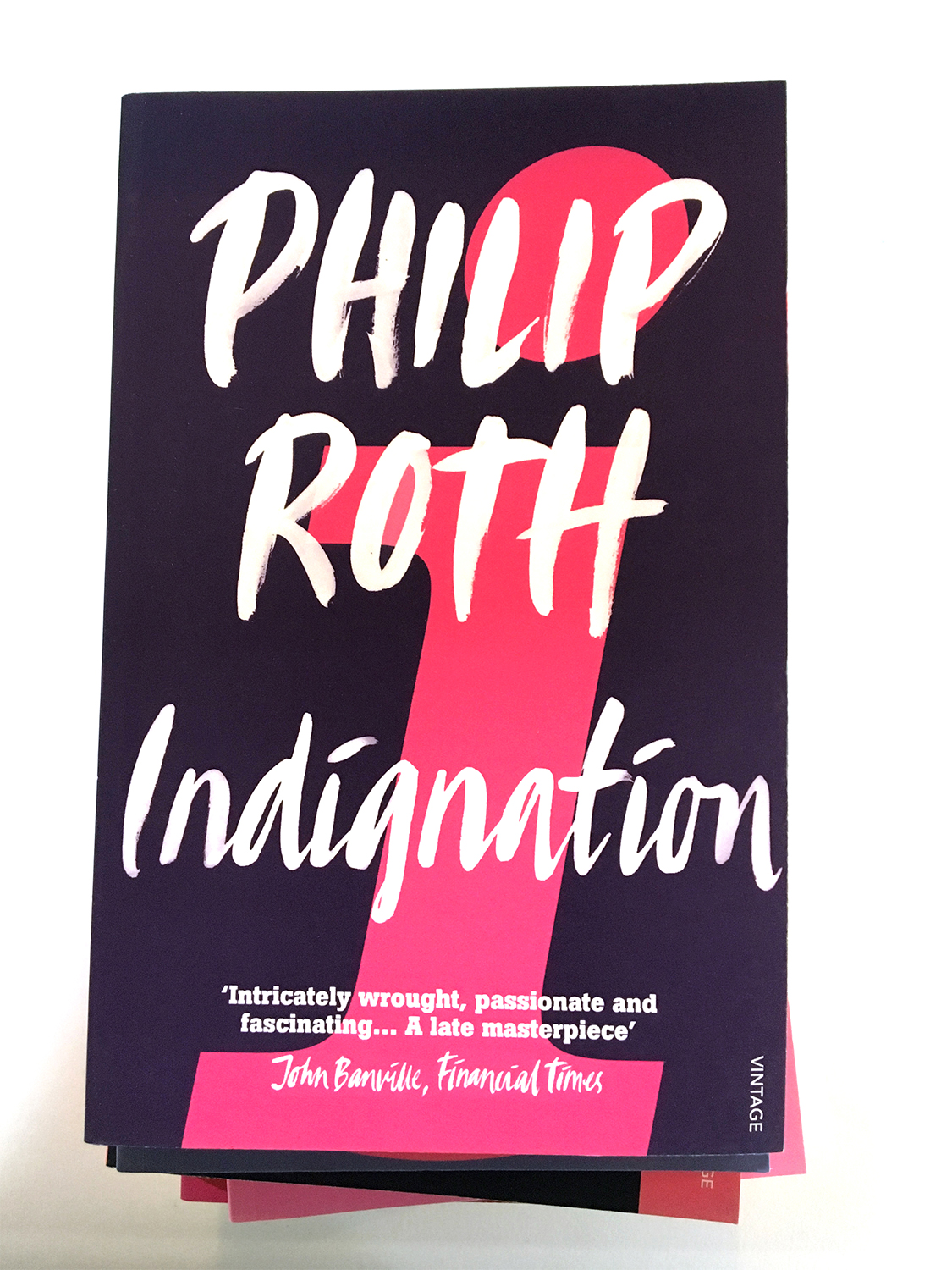
Gray318: Yes, I did the whole backlist for Philip Roth, and then a couple of front list titles a while back now, but yes.
Craig: This is Philip Roth, Nemesis, kids jumping off a pier.
Gray318: Yeah. I think that photo was supplied. He’d either seen it or it was from the publisher, I think. I don’t know, I never got direct contact with Philip Roth. It always just went straight through the publisher. I suppose designing the backlist was actually very hard. It wasn’t straight forward because I set up this very simple grid. Don’t know if I’ve got anymore here. I don’t think I have. But it was a very simple grid. There was one photograph to be dropped in, into the space. It was mainly a picture research project. But, Philip Roth wouldn’t give advice as to what the images were he wanted. He would just say when he didn’t like the images. Again, you would send three or four for each cover and you just got back an email saying, “No.”
Craig: Just, “No.”
Gray318: Yeah. That was it. Then you’d submit some more and you’d get, “No.” Then you’d send more and you’d get, “No.”
Craig: In a way that’s kind of nice, right?
Gray318: Kind of, but his backlist is quite large. So after awhile it was … I don’t know. I think the backlist must have taken probably two years to finish, just because it was that process of …
Craig: How do you bill on a project like that?
Gray318: Well, that’s the other joy of publishing. I don’t know. Yeah, you don’t. You bill a set fee. That’s the trouble with publishing. You can’t say, “Oh-”
Craig: If I do 800 iterations it’s going to cost-
Gray318: Exactly. Or you can’t say, “Oh, it’s taken me six months. Can I bill you for all the extra work?” No, it’s generally like-
Craig: Per cover?
Gray318: Yeah. That’s another reason why Zadie Smith is so nice to work for. You know that your financially … time wise it’s work.
Craig: Well, we got a Martin Amis set going on here.
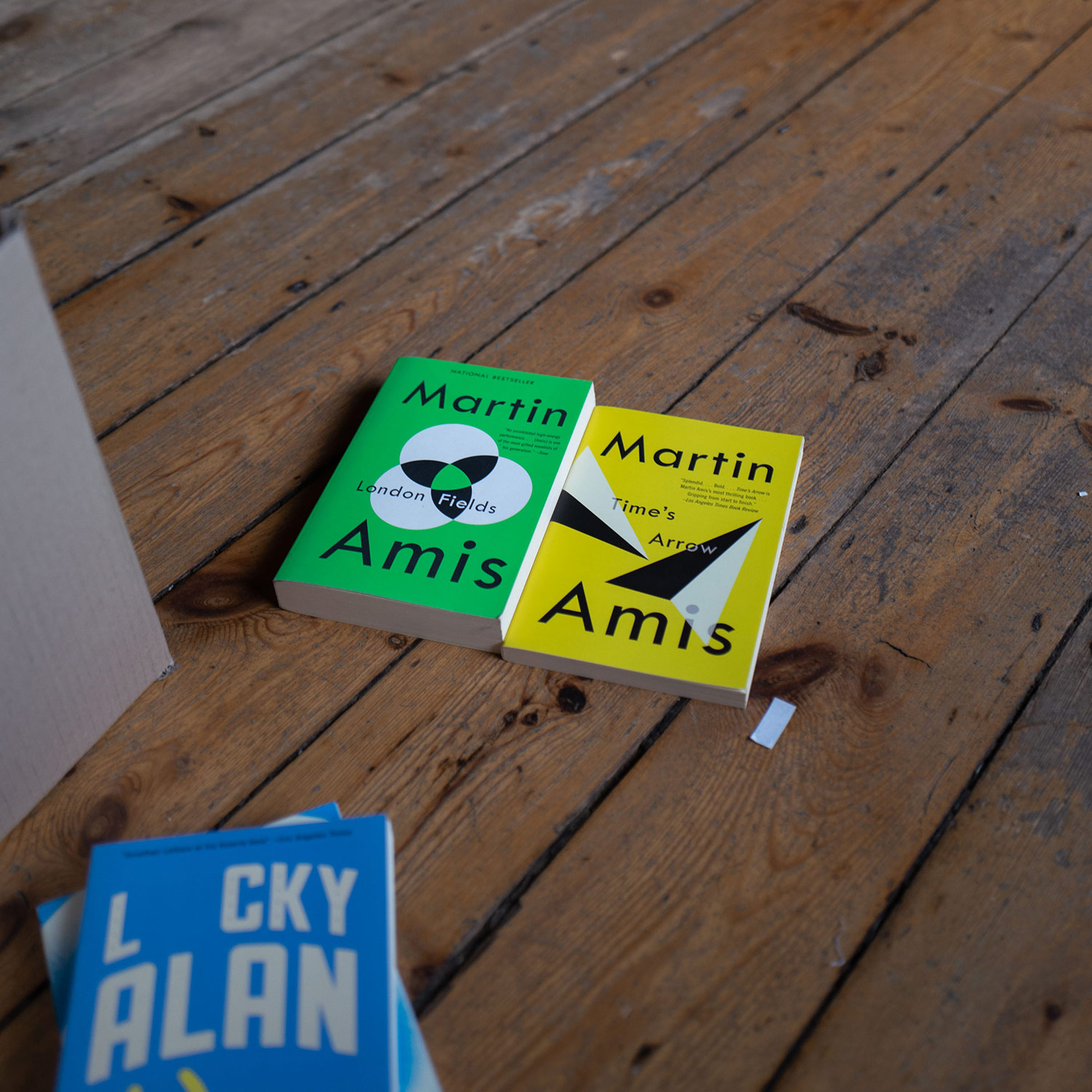
Gray318: Yep.
Craig: These are some bold colors and some shapes.
Gray318: Yeah, that was for vintage state. I just wanted to break that down into very bright, simple … We’ve used a [inaudible 00:36:08], a very English feeling font. I just wanted to use graphic shapes for those. Keep it simple. That’s a pile of junk.
Craig: Oh, nice. What’s going on here? What’s this? This is old maps.
Gray318: Yeah, some old maps. These are the boxes, because I’m packing my studio, this is why we’re going through these boxes, basically, because nothing was left out. I thought we’d just go through some stuff. I don’t know. I keep piles and piles of junk. They’re just old English maps that at some point, for some job will come in handy, I hope.
Craig: It’s amazing, isn’t it, when you really look at these things, and look at the amount of precision.
Gray318: Yeah.
Craig: We take this for granted, right?
Gray318: Completely.
Craig: Right.
Gray318: Especially if you think, they’re hand drawn. It’s not an illustrator and lines redrawn when things don’t work. It’s engraved, basically.
Craig: Yeah, then colored.
Gray318: Yep.
Craig: Even just to get these measurements, nevermind draw it out, setting up trig points all over the country, sending people out to go measure, before satellites.
Gray318: If you think how important they were to people, in terms of getting somewhere and where we just have to-
Craig: Google Map it.
Gray318: Exactly.
Craig: Yeah, part of my relationship with London, too, is on this trip it’s the first trip I’ve really used Google Maps in the city. I’m starting to star stuff. That starring, in a city collecting stars, to me, is my ownership or understanding of the city is connected to that.
Gray318: That’s nice, isn’t it?
Craig: Yeah.
Gray318: In your own personal …
Craig: But it does making moving through space pretty effortless. I always find it-
Gray318: Wow.
Craig: No. I won’t-
Gray318: Don’t say what it is.
Craig: I won’t say what it is.
Gray318: We’ll ignore that.
Craig: Great. How many times do you submit a cover and you’re like, “I actually am not proud of this, but … " because maybe you’re twisting stuff to match what they want and you get to a point where you’re like, “All right, we just have to show them something.”
Gray318: Let it go. Yeah. I really try not to. I think when you start out in this job you send probably eight to 10 ideas. And because you’ve sat and thought about eight to 10 ideas, they’re all quite diluted. There’s nothing that you’re really particularly proud of. I think I’ve really tried to not do that over the years. I’ve tried to hone it down to one really good idea, then two or three that are just behind it that you kind of … If they choose one of those, God forbid, you could probably make slightly better and be fairly pleased with.
Gray318: Also, your judgment changes. Some of this stuff is getting on a bit now and I look at it and I think like, “Oh, that is bad.”
Craig: Without pointing anything out specifically, what makes it bad.
Gray318: I’m not going to talk about these because … I don’t know. Something you just wish, like, “I with I’d given it a bit more time. I can see one in the series that I think’s good, but I can see some weak points where I was running out of time and I just had to let things go, I suppose.”
Craig: What does that mean? What’s a weak point?
Gray318: I can see the idea. I don’t want to talk about individual covers. I can see the idea but I know that it’s not had enough time given to it. In some instances I want to be crude, but in some instances I’ve been crude where I think maybe I shouldn’t have been. Yes, it’s just a bit shit. The cover we’re looking at is just a bit shit, but we’re not going to talk about it because the publisher might be listening. Yes.
Craig: Right.
Gray318: I don’t know. Sometimes you have ideas and they don’t come off as well.
Craig: Yeah. The thing I’ve become really sensitive to is watching a film, or reading a book, or a script, or something like that, that you’re like, “Okay, we’re two iterations away from it being good.”
Gray318: Yeah.
Craig: All the bones are there, everything is ready. You just gotta sit with it for two more iterations. You just gotta do it. You can’t … And that means cutting, and it means editing what it would look like. But it’s just not quite there.
Gray318: Exactly. And I think sometimes you let things go too soon. Here’s the rest of those.
Craig: Oh, your Ginsberg.
Gray318: Yeah.
Craig: Oh, wow. Okay.
Gray318: That gives you an idea of-
Craig: That’s interesting.
Gray318: … what we were trying to-
Craig: And this is all your lettering?
Gray318: Yes. And it’s funny because there was a point after Everything is Illuminated where a lot of people were saying, “Oh, can you do us your hand drawn thing?” And I’ve got a friend from school who just said, like, “Oh, my God. I keep going into bookshops and your crap handwriting is everywhere. Why is this … Why do people want this rubbish?”
Craig: Didn’t HP make a font and then do an entire ad campaign around you?
Gray318: Yeah, they did.
Craig: But it’s funny. You lean into the … Well, this is really pretty. This is your handwriting, too?
Gray318: Yeah.
Craig: This is very pretty.
Gray318: Oh, thank you.
Craig: That’s beautiful.
Gray318: But with smudges because I had to mess it up.
Craig: Right. No, but I think there’s an art. I think that’s one of the problems, is that people can look the Everything is Illuminated cover and go, “Oh, yeah. My kid could do that.”
Gray318: Yeah.
Craig: Right?
Gray318: Yeah.
Craig: If your kid could do that he’d be a book designer. He’d actually be a book designer.
Gray318: Yeah, poor kid.
Craig: There is something about the messiness and proportions. God forbid you say wabi sabi, but the wabi sabi-ness of-
Gray318: Oh, yeah. Completely, yeah. You wouldn’t believe the amount of time I spend deliberately forcing things just that bit further so they’re slightly uglier.
Craig: Yeah.
Gray318: Which is crazy, isn’t it?
Craig: Yeah. But there’s something about the … it’s signaling nature, and humanity, and a human touch. Part of, too, maybe why these covers and this hand drawn-ness is, in the last 20 years, been big. In a way it’s a response to digital typesetting. It’s a response to InDesign and Quark, and all that stuff.
Gray318: To quote HP, it’s trying to make it personal again.
Craig: Personal, there we go.
Gray318: Yeah. I think it is. I think that was it. I think it was a direct response, at the time, to typesetting. You can add personality. You can add literally someone’s handwriting. You can make it feel like it’s designed by a human.
Craig: Yeah.
Gray318: Yeah. But then it’s gone the other way. Now those hand fonts are now being set, and McDonald’s use them to sell burgers and it’s suddenly like it’s not personal anymore. It’s a set digital version of a human, which is very strange.
Craig: Yeah. It’s just part of the cycle. The cycle of this stuff, right? If anything has any commercial value it gets commoditized and plastered everywhere. And we get sick of it. And we’ll forget about it for a couple decades and then we’ll come back to it.
Gray318: Yeah, until I’m an old man.
Craig: You could go back to doing it.
Gray318: Yeah, exactly.
Craig: What have we got here? We’ve got-
Gray318: Here we go. Talk about ugly pretty.
Craig: Oh.
Gray318: This is a set of central European classics for Penguin. For this … as I was saying before with the dolls. I like to set myself little briefs. In this case it’s the idea of photography and illustration interacting together. These are very much, if you look at these, these are very much based on Eastern European graphics. I think I’d probably been looking at matchbox labels, looking at them now. Because they’re quite similar to those beautiful old Polish matchbox labels.
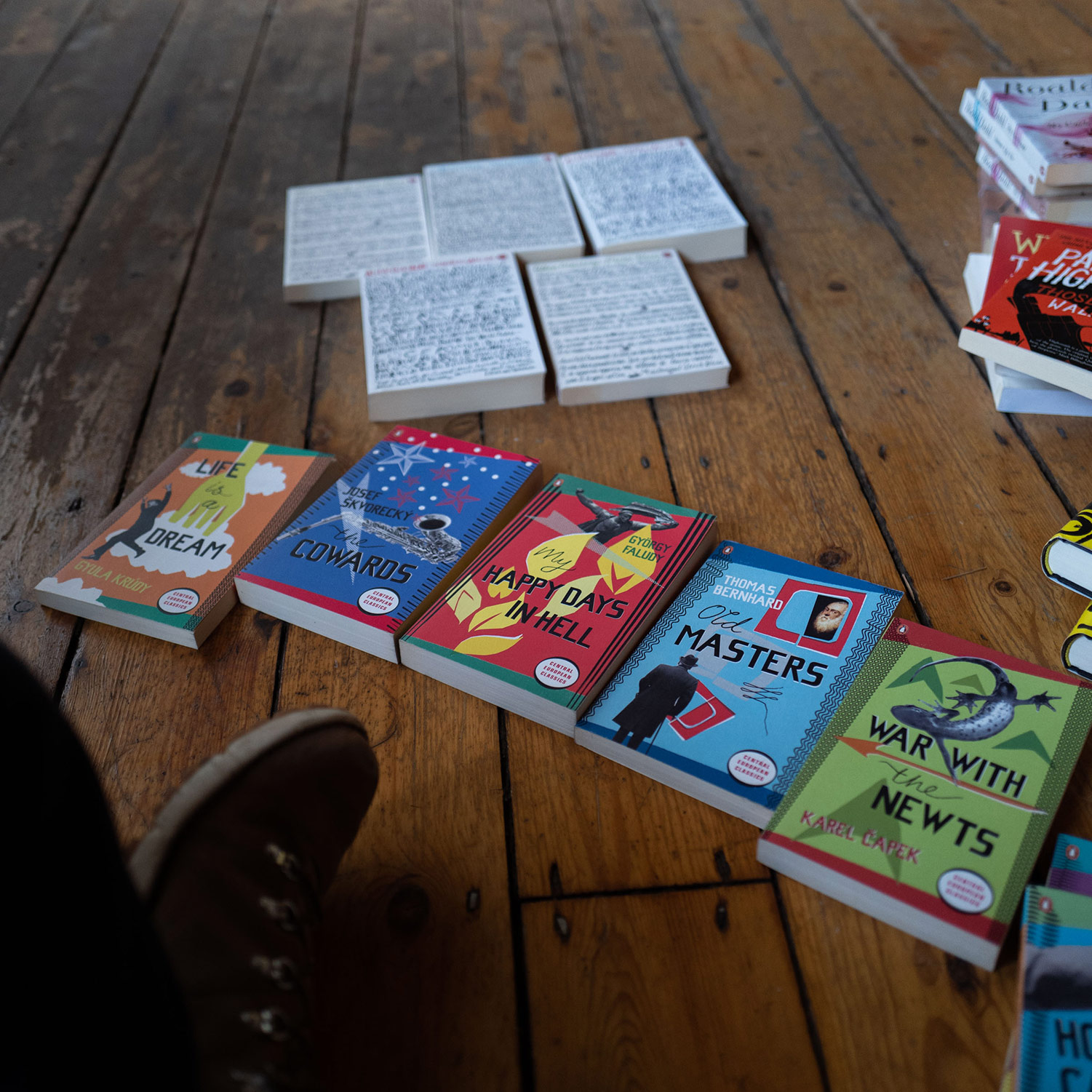
Craig: Yeah.
Gray318: But yeah, trying to get photography to interact with illustration in this 1950s way, I guess. In this case, again, I’ve made an ugly font. I think I’ve got this obsession with making, so I hand drew this clunky font. Then I’ve added scripted bits of fonts as well. Just wanted them all to be full of life, really. I think my brief was, these are quite cold, austere looking books. We want to make them accessible. I get that a lot. I think I get this accessible tag quite a lot. People say, “Oh, can you make them accessible?”
Gray318: I also got one really nasty email from someone. I can’t remember which book it was. I think it might have been the [inaudible 00:46:18] the war with the newts, just saying that, “I think this is one of the worst covers for this book I’ve ever … It put me off reading it.”
Craig: That’s the risk, right?
Gray318: Mm-hmm (affirmative).
Craig: You’re putting a face on something that-
Gray318: Exactly.
Craig: … people have already imagined their own face for.
Gray318: Yeah.
Craig: Or grown up with a different cover.
Gray318: Yeah. And some people, if this is serious literature they want a serious cover. They don’t want something that is flippant. They want something that shows their intellect on their bookshelf.
Craig: Yeah. Well, if you turn it sideways it looks pretty serious.
Gray318: Yeah. Come on.
Craig: That’s fine. And they all go together.
Gray318: Yeah, it’s nice.
Craig: You’ve 25 years of book design.
Gray318: Yep. [inaudible 00:47:07]
Craig: 20 years of freelance.
Gray318: Yeah.
Craig: Yeah, this is really interesting. We’ve got Albert Espinosa, The Yellow World. It’s just, there’s noting on the cover except for a yellow-
Gray318: Yeah. It’s just a large yellow dot.

Craig: How did you make that?
Gray318: That is cut out of paper and then just slightly offset because I wanted it to look handmade, I suppose. This is a self help book. It’s about a man’s or boy’s experience with cancer, basically. They came to me and said, “I don’t know how we’re going to do this. I don’t know how we can make this something that someone would want to pick up in a bookshop.” They said, “It’s an incredibly inspiring story. It’s beautifully written and, you know, we want everyone to read it. We don’t want people just necessarily looking for a book on cancer or a self help book to pick it up. We want everyone to read it.” I don’t know. We talked about it and thought maybe if we took … The title’s quite an old one, anyway, in itself. We thought if we just took that, took that shape, Yellow World, and just made it a big yellow planet and stuck it as a dot on the cover, then maybe in the bookshop you’re then faced with this strange object and just think, “Oh, I wonder what that is.” It’s almost … The very act that, in fact, you’re picking it up, and turning it over, and reading the book, you’ve already peaked someone’s interest.
Craig: Yeah.
Gray318: Yeah, it seems to work.
Craig: You’re 90% of the way there.
Gray318: Yeah.
Craig: Where does the phrase come from?
Gray318: Do you know what? I can’t remember.
Craig: But this was his title that he wanted?
Gray318: Yeah.
Craig: You see it, it intrigues you, you pick it up. You open to the first page. You have, “Gabriel Celaya was an engineer and a poet. I’m an engineer and a script writer. We’re both left-handed. There’s something about his poem, Autobiography, that goes right through me, brings a lump to my throat.” Yeah, all right. I can hang with this guy. Yeah, it’s very … I’m curious. I’m definitely curious. “I’ve always wanted to talk about the Yellow World, what I call my world. The world I live in. If you ever see a film I’ve made, or read a script, or notice a character I’ve written you’ll find a part of this yellow world. This is the world that makes me happy, the world I like living in.”
Gray318: Oh, see?
Craig: Yeah. You get pulled in. That’s all you need.
Gray318: He’s good.
Craig: Yeah. The problem is that if everyone makes their book covers like this, then it doesn’t work anymore, right?
Gray318: No. You’re always trying to look at the environment that you’re going into and trying to think, “Well, all right. This is here.” If you say, like, “A bookshop is like a crowd of faces. How am I going to make this person look interesting amongst that crowd of faces?”
Craig: Right.
Gray318: How am I going to not look like everyone else. I think that’s often my job, which has got harder with online, because you’re completely bombarded by all sorts of faces.
Craig: It’s been interesting to watch what MCD and FSG are doing with their little animated covers. Rodrigo, he’s killing it, right?
Gray318: Oh, he’s always been killing it. But I just think him and his team are amazing, constantly.
Craig: Yeah. Over the last 10 years, especially with the digital stuff happening and Kindle coming up, and Amazon really taking over and winning in terms of market space, how do you have these inert things live in a digital fluid space? There’s a whole book trailer movement. About 10 years ago, everyone goes along to pretend that didn’t happen. Horrible, like-
Gray318: It’s just this thing is, everyone forgets. It’s fine to have the ideas but publishing just has not got the money or the resources to back it up. It just looks like a C movie, not even B movie it was so badly done.
Craig: Just a mess. But I saw there was a few gems. Few and far between, like what was it? Super Sad True Love Story or something like that?
Gray318: I don’t remember that one.
Craig: I’m forgetting his name now.
Gray318: Oh, yeah.
Craig: The Russian guy.
Gray318: Gary Shteyngart.
Craig: Yes.
Gray318: He’s good. They’re funny, aren’t they? That worked because you had a comedian. Ben Stiller’s in that, isn’t he? He’s latest trailer, not sure if you’ve seen that.
Craig: James Franco is in one of the old ones playing his husband and they kiss.
Gray318: Wow, amazing.
Craig: Anyway, I think that’s the only way to do it, if they’re funny. Unless you’ve got access to A level Hollywood stars you probably shouldn’t be making a book trailer. The thing that FSG and MCD have done have been to take covers like this and add just the smallest amount of animation. When you’re scrolling through Instagram and they start moving, it’s-
Gray318: Just enough. Yeah. It has to be done well, though. I’ve seen so many people trying to replicate that and do it in such a crass way that you just think, “Oh.”
Craig: It better be good.
Gray318: Just too much.
Craig: What about you? 25 years you’ve gone from, really, the height late ’90s, early 2000s peak of publishing, right?
Gray318: Yeah.
Craig: Where it was just money everywhere, to everything is going to fall apart. Amazon’s going to destroy everything. Everything has to be an app. Eight, nine years ago everyone was trying to make apps and figure out if they should have app teams.
Gray318: Oh, people were told they were going to lose their jobs, so they should start thinking about an alternative career, because it was-
Craig: You mean book designers?
Gray318: Yeah.
Craig: How was it, now?
Gray318: Here-
Craig: Did you feel-
Gray318: Yeah.
Craig: … any of that? Was there ever a crunch period where you were like, “Shit, man. Maybe this is going to go away.”
Gray318: I think everyone had talked about it but I have been doing this for a long time, so I’ve been around since the last recession. Publishing has this weird thing whereby it talks a good game. It says, actually, what we should now do is reduce the amount we publish and make sure it’s only really good stuff. But they don’t do that. They do the opposite, especially in a recession. They actually … It becomes more and more like horse race. They just throw more and more horses into the race. They’re desperate to find another success so they’ll just keep backing more and more horses in the hope they’ll find one of them is going to win the race.
Craig: Yeah, the reality is knowing what’s going to work in the market. It’s not a guarantee, there’s no formula.
Gray318: It’s never been predictable.
Craig: And if it was, it would be the easiest business in the world.
Gray318: Exactly. So, consequently, there’s more books. There’s more need for covers. There’s more need for people who’ve designed covers for books that have worked at one stage or another because they think-
Craig: Do that again.
Gray318: Yeah, exactly.
Craig: The semblance of a formula is there. Let’s … Yeah, no …
Gray318: I haven’t, as yet. Also, I think the technology never delivered on the promise, or hasn’t yet in terms of e-readers. I don’t know, it’s just so static and so ugly. It’s never felt that it’s followed through. A lot of people read on their phones. I get that, but it doesn’t feel like a well designed experience. It feels like email, you’re just reading something that’s just information. It doesn’t feel like a book, I suppose.
Craig: Well, it’s also the wrong context. To engage with this stuff you can’t dip in and out, for the most part. I can’t, at least. I don’t even read books on my phone. I don’t try to. It’s just impossible. There’s too much burbling under the surface, calling for your attention, I’ve found, to really stay engaged. I have a Kindle for when I’m traveling.
Gray318: Yeah, me too.
Craig: Which is great to be able to carry a couple books around without it having to weigh a lot. But there’s no joy in the machine-
Gray318: No.
Craig: … at all. E-ink, I think there’s potential for joy in E-ink as a technology. The ink screens can be beautiful, it’s just Amazon has not cared about beauty in its 25 year history.
Gray318: No, it doesn’t seem to. Yeah, it’s just been about that information. I don’t know. There’s also this thing about … I was sitting there the other night and I had to read a book on an e-reader. This is the ironic thing, a lot of my manuscripts are provided digitally, so I have to read the book digitally to then design it in paper, which is, I don’t know, strange. Anyway, I was sat there the other night. And you’re sat there with this blue light screen, just before you go to bed, thinking, “This is not good. You know, I’ve been on these screens all day. The last thing I want to do is sit here now with this screen. I want something softer. I want some paper.” You know, you want something different, don’t you? It’s just not doing it for me, I think. You want to different experience away from your email and from your phone, and from your messages.
Craig: Yeah. It’s the whole thing of even just having your phone on the table at dinner, or having your phone on the table when you’re trying to work on something, quote, unquote, studies have shown that your attention or your ability to focus drops by 20% just having the device in your field of vision. Yeah, if you’re trying to engage with a long form piece of text and you’re touching the thing that is designed, now, to take away your attention, to pull you in different directions. Yeah, it’s not going to feel good. It’s not going to work. The one saving grace of the Amazon Kindle stuff, the e-ink readers is that they are so badly designed you’re dis-incentivized to move around it. Even just going like, “All right, go back to the library. Let me try to find that book. Who knows where it is. The refresh is so slow.” You don’t really want to move anywhere except either the next or previous page. That’s a benefit.
Gray318: Do you have ugly adverts on yours as well?
Craig: I pay to get rid of them.
Gray318: I didn’t know you could do that.
Craig: When I buy a kindle it costs me $600.
Gray318: Really?
Craig: Because I turn off all the ads and I do the unlimited worldwide 3G, which I think is one of the most innovative things they’ve added to it. Where you can just be anywhere and it’s-
Gray318: I didn’t even know you could do that.
Craig: That’s the magic.
Craig: Should we transition over to your workspace?
Craig: All right. Now we’re in the workspace.
Gray318: Yeah. I’ll try to find some [inaudible 00:59:06]
Craig: Since you moved into this building eight years ago, has this been your space the whole time?
Gray318: Yeah. This is [inaudible 00:59:23] Hewlett Packard [inaudible 00:59:24] do. That’s the start of it.
Craig: That’s amazing.
Gray318: That means that the rest of it’s in here somewhere.
Craig: It’s funny how crude everything looks here.
Gray318: Yeah, exactly. Well, it is. It gets drawn and scanned and then tightened up as we go. Most of it starts with ink.
Craig: It’s a combination of you’ve got some normal poster paper, it looks like. Then you’ve got-
Gray318: Here we go. That’s an interesting one, that’s a Safran Foer booklet.
Craig: The title got switched.
Gray318: Yeah, exactly.
Craig: This is I’m Okay, it says. Then it got switched to-
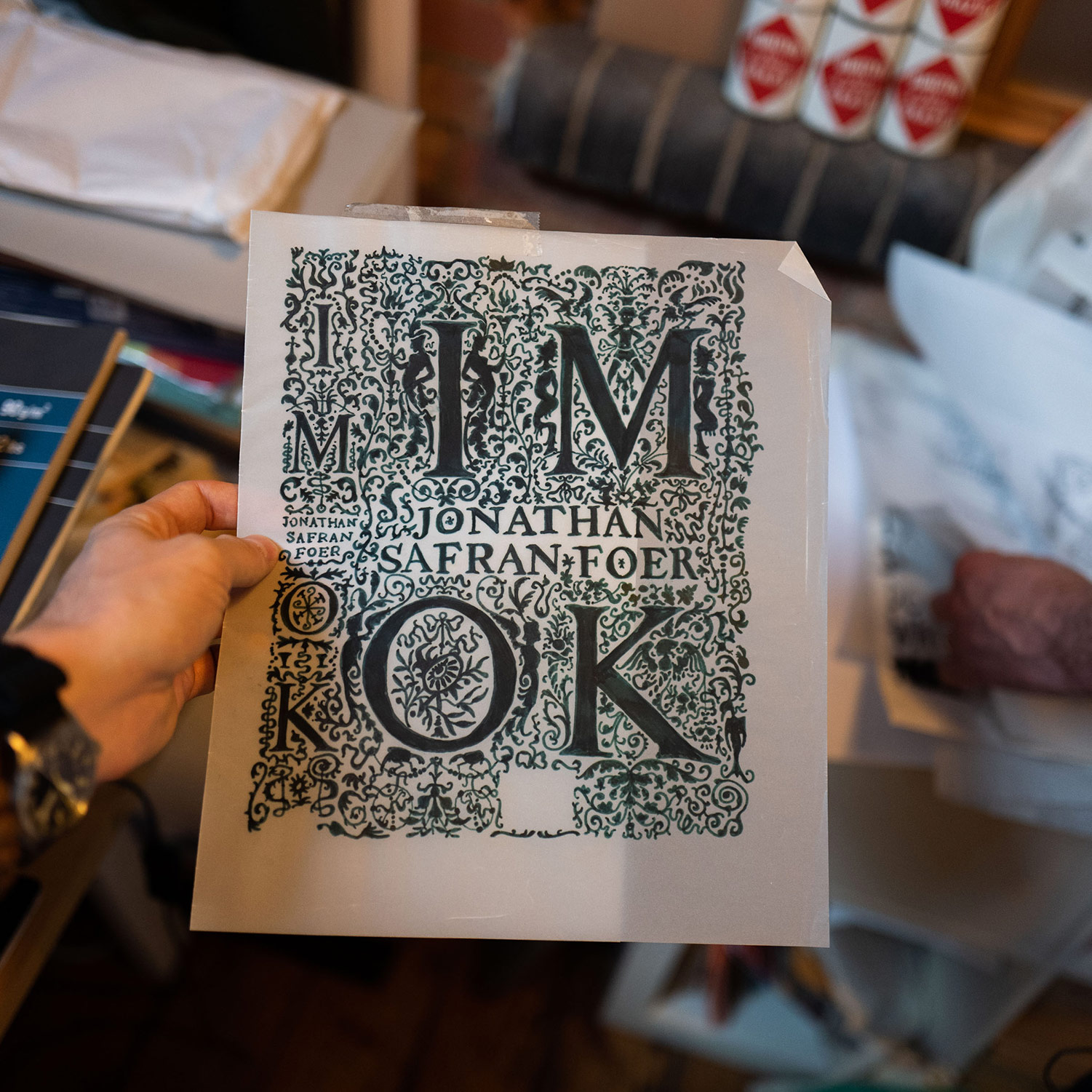
Gray318: Extremely Loud and Incredibly Close.
Craig: Easy transition for you.
Gray318: Yeah, so unfortunately, that design then proved totally defunct. There was nothing I could do there at all.
Craig: It’s beautiful though. And you … Why have I seen this before? Is it because you showed it?
Gray318: I must have done it in a talk.
Craig: Yeah.
Gray318: Here we go.
Craig: Oh, this one you have wrapped up. You have the Everything is Illuminated-
Gray318: Yeah. I wrapped that one up because someone came in the other day and said, “Like, should you not be protecting that? Is that probably not worth … I think people know it so you should probably look after it a bit more.”
Craig: This is the original.
Gray318: Yeah, this is the first thing that I did. Yeah, basically this is the original that I’ve just scanned in, and pulled around a bit, and sharpened up a bit.
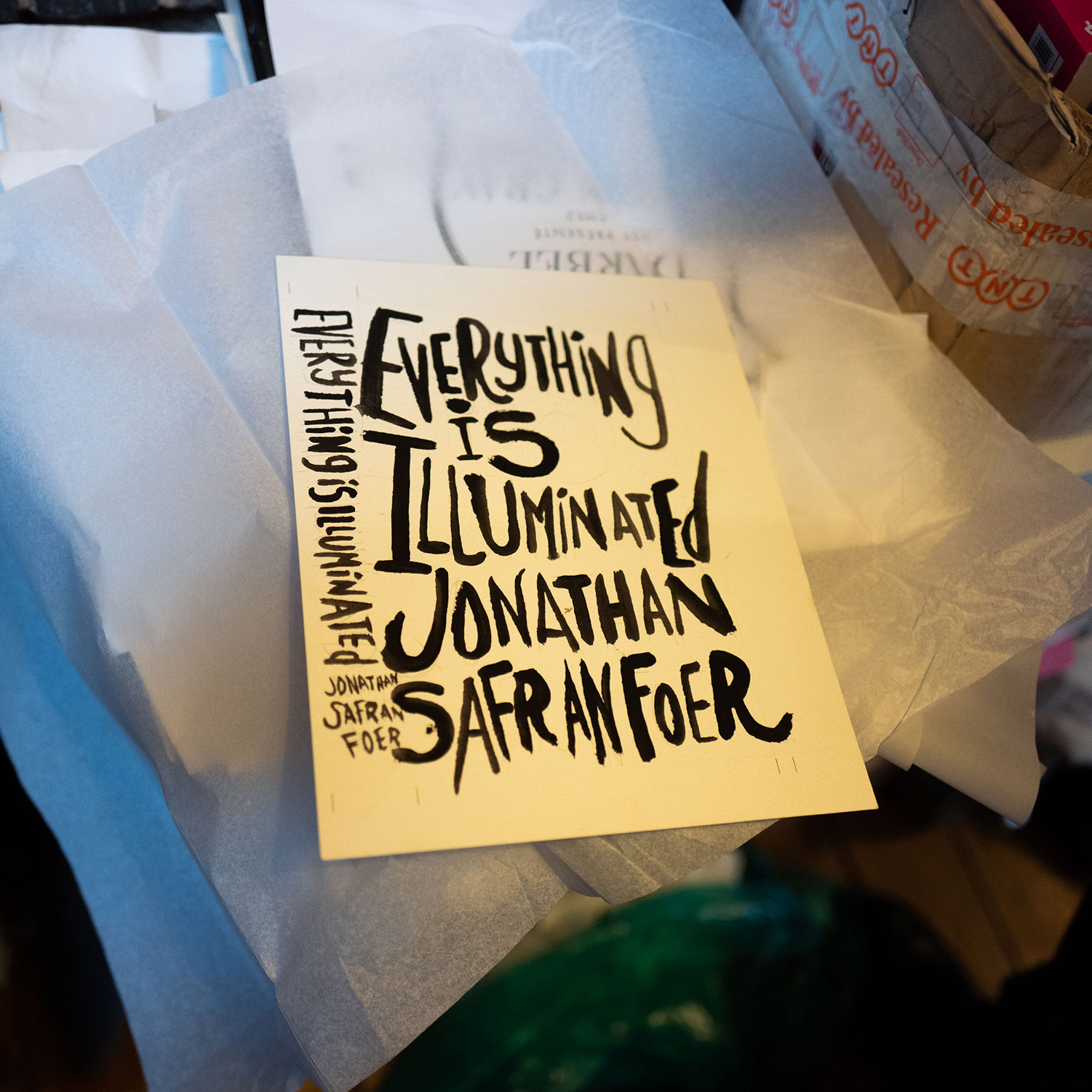
Craig: It looks like you … This is … Can I touch it?
Gray318: Yeah, of course. Yeah, yeah.
Craig: This is a textured, what is this? A watercolor paper?
Gray318: Yeah, just watercolor paper.
Craig: Yeah, watercolor paper. It’s got some marks. You have your-
Gray318: Yeah, these are my cover markings.
Craig: Cover margins. Right?
Gray318: Yeah. So here’s the spine. Here’s the front, the crop of the front.
Craig: Yep.
Craig: Well, I feel like this could probably be sold to someone for a couple bucks.
Gray318: A couple three bucks, maybe.
Craig: It’s just interesting to see.
Gray318: How crude it is?
Craig: Yeah. Well, and you said this is the first one you did?
Gray318: Well, no. That’s pretty much it. I did that and then I scanned it and I just, I don’t know, cleaned it up a bit.
Craig: What did you do before? How many iterations did you do before you got to this?
Gray318: Oh, [crosstalk 01:01:51]
Craig: Yeah.
Gray318: I probably … I’ve done some really bad visuals for that job. Actually, some really terrible things. Real cliches. A lot of book design is cliché anyway, but there was a lot of pebbles on beaches, hands holding. I can’t remember, but maybe a bird’s nest or a stone, or something ridiculously bad. Then I had this conversation with my friend who’s art director at Penguin, John Hamilton, who sadly passed away last week.
Craig: Right, right.
Gray318: Yeah. Terrible. Anyway, I had a conversation with him and he said, “Oh, why don’t you try something text based. Why don’t you do something kind of like typographic.” At the time my dea of typographic covers was this very set, very staid sort of lettering. I was thinking, “But that just doesn’t fit this book. Why is he saying typographic?” I don’t know, I’ve been looking at this book of old church signs I happened to have and I thought, “Oh, maybe something like this will work because this is … you know, I can see the pastor who’s kinda made these signs, you can see his handwriting. You can see his personality in those signs.” And I thought I could do something similar. I could just show the character of the anarchic narrator of this book through the font. Yeah, I just started to trying to channel that spirit, I suppose, into the cover and paint like I’d imagine he would paint if he had a paintbrush. And that’s how we ended up with this.
Craig: That’s interesting. Church signs, handmade church signs as the seed.
Gray318: Yeah, complete inspiration.
Craig: Well, you know, walking around London, the thing that I’m delighted by is just how messy all the street writing is. I love that.
Gray318: Yeah.
Craig: It’s incredible. All the look right, look left stuff. Then the arrows and the lines.
Gray318: They’re really crude.
Craig: It’s super messy.
Gray318: Yeah, it is.
Craig: But messy in this organized, it’s consistently messy, right?
Gray318: Yeah.
Craig: The edges are so rough.
Gray318: Oh it’s crudely done, yeah.
Craig: But this is the city of hand lettered roads.
Gray318: But I suppose that’s interesting because when I was in Japan I noticed how sharp and how smooth they are, and they’re lined out, aren’t they? You can see the chalk on the-
Craig: Yes.
Gray318: I saw some new stuff that had been done Tokyo and you can see deliberate lines. Here they will just take a white like marker and basically just slap the type on the road in a rough idea of how it should look.
Craig: Yeah. But there’s something really endearing about it. I’m walking around the city and I’m just smiling at all the road marks.
Gray318: Oh, nice. Yeah.
Craig: Just because it feels a little bit like a miracle or something today, like that, that a city of this size … If we were in some other random city that was not one of the biggest, most wealthy cities in the world, and you’d see that you’d go, “Okay, yeah. Right, you’re just going to hand paint it.” But in London …
Gray318: Yeah, it’s true. I don’t always think that. I always think how, also, I always imagine what does the tube look like to everyone else from around the world, everyone else who’s gone on, who’s taken that idea and thought, “Actually, we’ll build a proper subway system that’s wide, and it’s big, and it fits lots of people.” The fact that we’re still running this model railway in the biggest city in the world. It must-
Craig: Well, that’s first mover disadvantage, right?
Gray318: Yeah.
Craig: When you-
Gray318: But still? Are we still doing that? We didn’t think about rebuilding it or redoing it? It’s still heritage.
Craig: Yeah. It’s endearing if you don’t have to commute.
Gray318: Yeah. Harry Potter world.
Craig: Yeah. We got over here, this Stephen King sign.
Gray318: Okay.
Craig: What’s going on with this?
Gray318: That was for a fiction article in the New Yorker. Basically, they have this fiction section in the New Yorker where once a month they publish a short story by a writer. And they ask book designers or illustrators to illustrate it. I was lucky enough to get Steven King, so that was just the original type. I then went on to put onto a tree, and then got some sort of bullet hole in it or something like that.
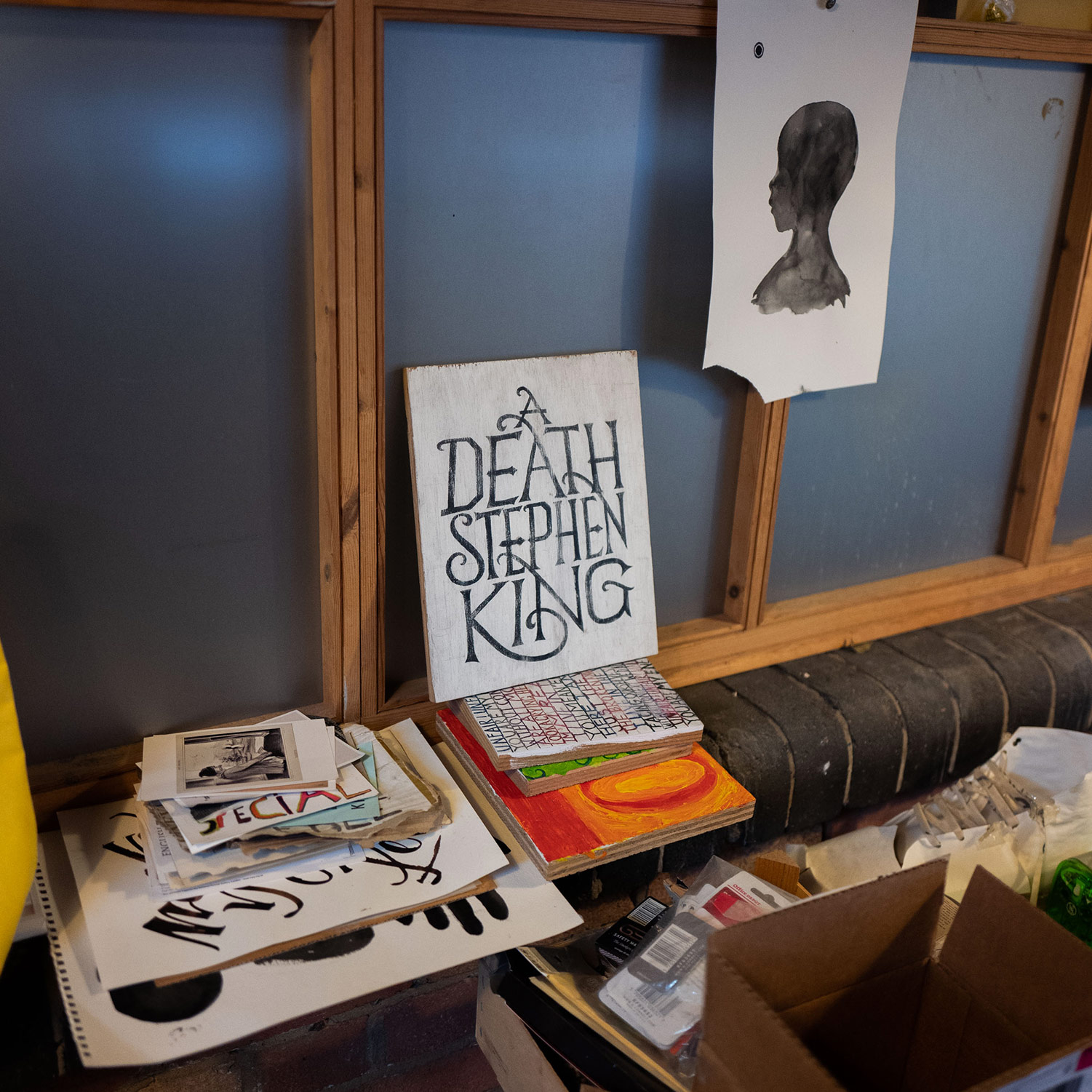
Craig: You put it onto a tree?
Gray318: I used the power of Photoshop to impose it onto some wood, yeah.
Craig: Who is this silhouette that we have?
Gray318: I can’t remember who that is. It’s just something that I’ve done or did for a book cover. And I thought, “Actually, that’s not bad.” So I’ve kept it. A lot of my stuff I think, “That’s pretty shit.” But this is all right.
Gray318: Can I show you these paintings while we’re right by them?
Craig: Yeah.
Gray318: Just because I feel like you need to see.
Gray318: Yeah, that’s the original. You get the idea.
Craig: Talk me through how you did this. Did you draw any guides for this or did you just-
Gray318: Yeah, I drew my individual … You can see pencil lines. Then I’ve just then started from left and carried on. Because you’re reducing it down. It’s fun, isn’t it? The things you do for a book jacket. What’s that got to do with a book jacket? I think there’s no other … I think if I was in advertising and someone would have done that for me, I wouldn’t have to … because of the way book design is you get to do anything yourself. I’ll take photos. I’ll draw stuff. I’ll make stuff. It’s great.
Craig: Have you exhibited this stuff before?
Gray318: No, no, no. Not at all.
Craig: That’s crazy.
Gray318: Is it?
Craig: That seems like a pretty obvious thing to do.
Gray318: That’s the Polish one.
Craig: The Polish one? Great.
Gray318: I don’t speak Polish. This is all-
Craig: Just copying, hoping you get it right.
Gray318: Yeah. Just hoping I did it right.
Craig: Where do these boards come from? They’re just laying around?
Gray318: I got a timber merchant to just cut some boards for me to roughly the size that I thought these were going to be.
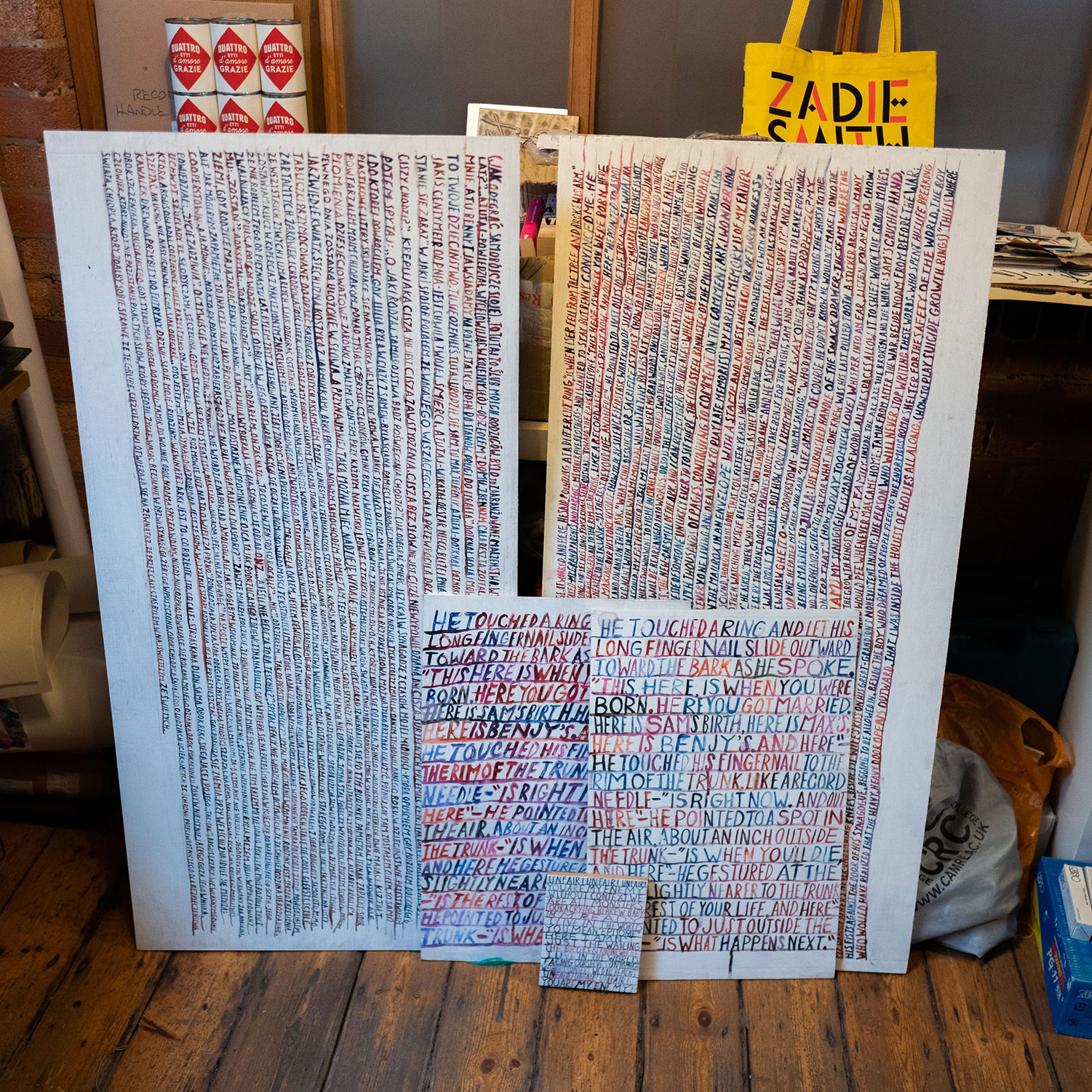
Craig: Yeah, it’s funny. I guess I can see the proportions here. It almost looks like the big long 16x9 boards. Those look like … Yeah, if you open up a book. Oh, look at that. Okay.
Gray318: That’s a Nikon original. Test. A little one. Then we’ve just gone from there.
Craig: These boards, yeah, if you open up a book jacket and spread it out, it would be this proportion, right?

Gray318: Yeah, exactly. It goes right around. That was one avenue for this cover. There’s a pile of stuff in here, which is the pre … where we were at before, which is fingerprints.

Craig: Oh, interesting.
Gray318: I had this idea of every cover would be quite literally fingerprinted.
Craig: Well, you’ve done one with your hand. You might as well give the world your fingerprints too.
Gray318: Exactly. But we did hundreds of these as well. This is hundreds. By the end of making these, I’ve got bleeding thumbs. If you look, the prints are so closed up it’s actually starting to look like just a shape. You can’t even see my fingerprint anymore.
Craig: To describe this, it’s like a field of fingerprints. Then you’ve taped the typography. Then you’ve pulled the tape off?
Gray318: Yeah. We’ve laid down the tape, masked off an area, and then thumbprint over the top. After about the, I don’t know … This one was too Christmasy, apparently. This one was not bright enough. After a while, I got to the stage where my thumbs were all broken and there was no print coming out. Someone in the studio said, “Oh, have you never thought of just getting a rubber stamp?” Then there was that moment of like, “Oh, you idiot.” She said, “Oh, actually, I think I’ve got one.” So, she lent me a rubber stamp of some thumbprint. Anyway, we did hundreds of these. As I said, this cover went on for a year.
Craig: It didn’t work.
Gray318: No.
Craig: Wow.
Gray318: There was something just not quite right about it.
Craig: But what’s interesting is you do get, the final cover, you see some of the DNA of that in these.
Gray318: Yeah, you do.
Craig: Right?
Gray318: Definitely.
Craig: Just the feel of this type, definitely this carried through.
Gray318: Yeah the I in particular. Yeah, that I.
Craig: Then also just the layers. You ended up with, instead of thumbprints, this text.
Gray318: Yeah, it’s true.
Craig: And the coloring, too. There’s definitely some syncronasy between that as well, right?
Gray318: Yeah. No, it’s true.
Craig: But it’s funny how the jump from this to that was across a chasm of despair, basically-
Gray318: Oh, yeah. Well, this is mine-
Craig: As soon as you were done.
Gray318: … this is the end. This was when I got sacked. They basically said, “We’re going to get someone else to have a go.” This was the end of my career as far as I was concerned.
Craig: Wow.
Gray318: Then suddenly we just … I was going to say, that one was relatively quick. The idea was relatively quick to be approved. But the making of it was another three months.
Craig: Yeah.
Gray318: Yeah.
Craig: What else is going on here? We got sketch books down here.
Gray318: Do you want to see? I actually want to show you one more thing.
Craig: Okay.
Gray318: [inaudible 01:12:21] because I’m moving all this artwork is resurfacing.
Craig: Right, right. Infinite Jest, yeah.
Gray318: Yeah, so this is-
Craig: Wow. I was wondering how you made this.
Gray318: Yeah.
Craig: Oh, shit.
Gray318: This is the artwork made from tabs.
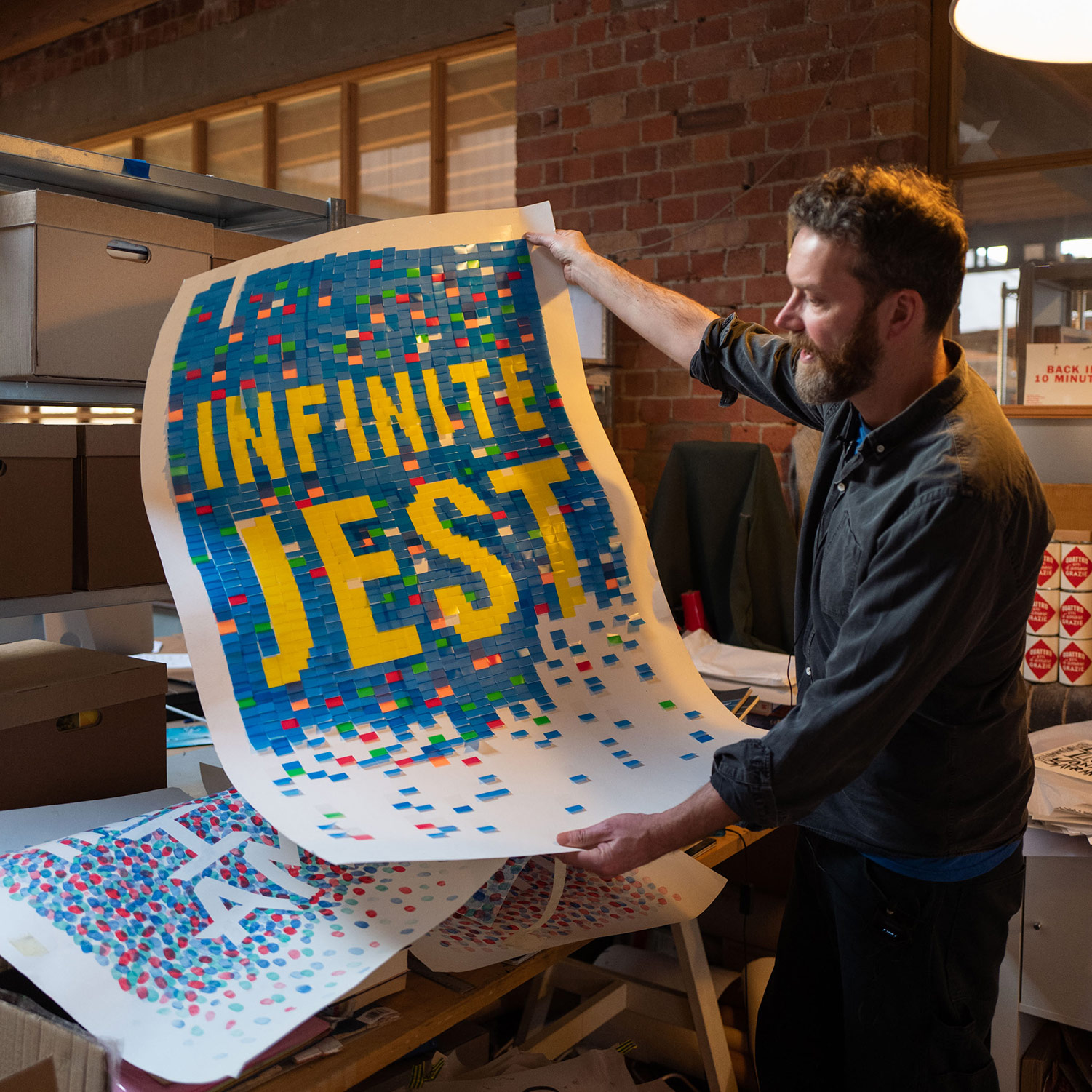
Craig: Right, right. I thought these were … I never looked closely at the cover, I guess. I thought they were post-its.
Gray318: They’re slightly smaller. They’re little tabs.
Craig: I was thinking if they were closer, Christ, that would have been a big-
Gray318: Yeah, yeah, yeah.
Craig: Oh, look at that. What was the … Talk us through getting to this.
Gray318: God, right. This was the anniversary edition of Infinite Jest. And-
Craig: Which anniversary? 10?
Gray318: I think it’s 20.
Craig: He was gone by then.
Gray318: Yeah, yeah, yeah, yeah.
Craig: That’s part of it-
Gray318: No, this only came out last year, year before.
Craig: Oh, okay, okay.
Gray318: America commissioned me to do the anniversary edition. I’d seen this artwork by Corrie Baldauf, who basically, she’d gone through Infinite Jest and using these tabs taken out themes and colors and marked them in these post-it tabs. I just thought this was an amazing object. I was thinking … obviously, I kept that in the back of my mind for some reason. When it came to this I thought, “Oh, what am I going to do? I don’t quite understand.” I tried to read the book and I spent my whole time flicking backwards and forwards to the footnotes. I thought this whole experience is about the footnotes in a ways. There’s a backwards and forwards. And I thought, “Well, why don’t I just use the tabs that she’s done and make the whole text, the whole cover out of that?” Also, I loved John Gall’s original cover which is that blue clouds, the bold yellow type. I thought, “Well, why don’t we just take that and use that as our basis, but make it out of these tabs, and have it kind of fading and sort of breaking up.” Because it feels like without those footnotes, the novel is half a novel almost. Isn’t it?
Craig: Yeah, yeah.
Gray318: Yeah, it breaks up as you flow through.
Craig: That’s interesting. You’re talking, again, about John Gall’s setting the branding of the book and then running with that.
Gray318: Yeah.
Craig: Because why break that? That really is, that’s so-
Gray318: Yeah, in my head that’s-
Craig: … etched.
Gray318: Etched, yeah. This was an anniversary and I wanted to pay tribute to that, I guess.
Craig: Yeah.
Gray318: Then what happened is in America, for whatever reason, I don’t know. They decided not to run with it. They decided to open it up to a public competition, which was a strange decision, I felt. But I could understand that. I think it was maybe the estate wanted to do this. But it meant that having spent however long making this thing, the whole project was dead. I was just completely devastated that I spent all this time doing this thing. I thought about it, and I thought, “Well, what am I … you know, this is no use.” So I just rang up a friend who works at the UK publisher and said, like, “Don’t suppose you’re doing an anniversary edition?” And they said, “Oh, we’re waiting to see what America does.” I said, “Well, just to let you know that I have done a cover for it and it’s been rejected. So, I’m really pleased with it. So, do you want to see it?” And I sent it to them. And they said, “Oh, well let’s do it.” So we did it in the UK in the end.
Craig: Wow.
Gray318: Which was great. But I’m still saddened that it didn’t make it to the US.
Craig: But even though it didn’t, this tabbed cover, to me, it’s etched into my mind as Infinite Jest now.
Gray318: Oh, good.
Craig: There’s something. Maybe that’s just having seen copies of it online or something.
Gray318: Yeah.
Craig: Yeah, Instagram. I don’t know. I think it won in the end. But what a disheartening story of coming up with a killer, perfect cover. Even at your stage in your career with all this work, they still kick it to the curb.
Gray318: Oh, it still happens all the time.
Craig: That’s pretty depressing.
Gray318: I think marketing department, sales departments, they’ve all got a strong idea of what they want. If you don’t fit it, yeah, they’ll junk it. Also, it’s a mad way of working, isn’t it? What I tend to do is do the final thing, often. And then say, “Here you go, do you like it?” And if they say, “No,” then that’s it. Rather than say, “I’m thinking of doing this thing with post-it notes, here’s a little sketch.” I often think, “Oh, no. I’ll do the whole thing and then they can really understand it.”
Craig: Yeah.
Gray318: Which is nuts, really.
Craig: How about that?
Gray318: What have we got? I don’t know. It’s difficult, isn’t it?
Craig: You just picked up … this is a cassette case.
Gray318: Yeah. This is a book by Elaine Castillo, which is it’s a story of a Pilipino girl in America. Also, it’s set in the ’80s. I just had this idea of … Well, actually, no. I didn’t have this idea. That’s not true, is it? Let’s think about the text. The text, in the book, basically, her whole life is … her link to home are these old ’80s cassettes that she’s brought from the Philippines with her to America. She’ll play them in the car when she travels. I don’t know. These cassettes seemed very important to me, so I thought, “Well, let’s run with that. Let’s make it a little cassette.” I found out the price of a Philippine cassette in the 1980s. I’ve made a little price sticker. I tried to lend it as much authenticity as I can. Well, you were talking about wabi sabi earlier. I would say that-
Craig: Whoop.
Gray318: Oh, idiot. I would say this whole cover, I realized there was something not working about it. There was something that was too static. It was feeling not believable. It wasn’t quite real. Then because I cut the cover slightly short I had to jam … Actually, I cut it slightly long, I think. It doesn’t quite fit the box so I had to jam it in. Then I suddenly realized it looks creased by-
Craig: Oh, right.
Gray318: Suddenly it became like one of those fake cassettes you used to buy in markets, back when you bought bootlegs. I suddenly thought, “Well, that’s it.” Suddenly it’s like this is real again. It’s worked. I don’t know. It goes back to that personal thing again. Just lending something, some authenticity. I think quite often what I do is a bit like acting. You’re trying to make it believable. It’s a bit like you create props and you’re trying to make them tie up with the world that’s inside the book. I think this felt like a prop. Does that make any sense?
Craig: Yeah, totally.
Gray318: Not really.
Craig: No, no, but it also speaks to the insanity of this work.
Gray318: Yeah.
Craig: Right?
Gray318: Yeah.
Craig: It’s like there is no method.
Gray318: No, I made that up.
Craig: The fact that just by cutting the paper a little wrong, shoving it in there, and then having it not fit was the missing piece.
Gray318: There’s also layers of stupidity. I’ve offset, I’ve moved the inks so that the type doesn’t quite line up. I’ve gone to that level. I want it to look badly printed inside the case. I’ve put these bad screens. I want it to look originally bad, which is crazy when you think about it.
Craig: Especially considering that no reader is going to intellectually grasp any of that, right?
Gray318: No.
Craig: It’s all going to be subconscious. You’re going to just feel it. It’ll be three people who scrutinize the cover and go, “Wow, this is interesting. I wonder where we found the cassette.”
Gray318: And two of them are probably me and the author.
Craig: Right.
Gray318: That’s it. That leaves one.
Craig: I’m the third one.
Gray318: The one lunatic.
Gray318: That’s made me sad.
Craig: No, no. I mean, this is the heart of crafts, isn’t it? Doing stuff that people don’t pick up on.
Gray318: I suppose that’s it, as well. You know you’re always going to look at this stuff, as well. And you want to make sure that you’ve made it to the best of your ability. Not your ability but you’ve ticked all the boxes that make you happy without being an object. Often, you were talking about those covers that I don’t like in that box, that I don’t want to show.
Craig: Sure.
Gray318: The reason is that I know there are two or three little details on them that I would do differently now, that would improve them and would mean that I could look at them and think, “Ah, at least that is the complete vision that I had when I started that cover.” Rather than, [inaudible 01:22:11] “What the hell is that, so bad. Why didn’t I just spend a little bit more time getting that right?”
Craig: America’s not the heart. Cassette, for example. Even if people don’t recognize the insanity of this wabi sabi replication of whatever a cassette was 30 years ago, they’re still delighted by it, so that’s the win.

Gray318: I think that is the challenge. What you don’t want them to notice the bit. You want them just to think, “Oh, look it’s a cassette.” You don’t want them to think, “All right, it’s a mock up of a cassette that’s been … " I don’t know. It’s that level of authenticity you want. You want people to believe that it is exactly what it is.
Craig: Well, you don’t want it to fall into the uncanny value of anything, where people start to go, “Well, that doesn’t look quite right.”
Gray318: [inaudible 01:23:05] of a cassette. Exactly.
Craig: What’s happening with the shoe thing?
Gray318: The shoe thing, well, we used to have … yeah, it should have gone in the bin. It’s a paper shoe. I’ll tell you what that is. It’s because we used to have a German woman in the studio. She said that there was a tradition whereby on … I can’t remember if it was Christmas Eve or the week leading up to Christmas, whereby children would put their shoes out and they would be filled with money, they’d be filled with spare change. I don’t know if you’ve ever heard that?
Craig: Yeah.
Gray318: Anyway, I didn’t have a shoe lying around the studio so I thought, “Oh, well, I’m just going to make a paper shoe.” I spent and afternoon making this paper shoe and actually had so much fun doing it that I’ve kept it. It’s completely falling apart. It’s still full of money. Yeah, I should have thrown it away years ago, but there’s something about the fact that I, probably something more about how I felt when I made it that means that I’ve kept it. I think because I enjoyed making it and there was a freedom in making it that sometimes I don’t get in making work. That I think kept it as a reminder of that time.
Craig: Ah. The olden days of shoemaking.
Gray318: Exactly, yeah.
Craig: Then you got the Code Tree.
Gray318: Yeah. I’ve got one of the original sheets, or had. I’ve got some other ones, but that was an original printer’s sheet where they’ve cut the holes in, basically. I just keep it up there as a nice object.
Craig: Yeah. No, they are. I have a bunch of those from books I’ve done.
Gray318: Oh, all right.
Craig: In fact, as part of the process of selling some of the books I was giving those away. I was shipping those off to people as a little thank you. Because it is weird do get that. Then you look at all the registration marks and it’s this thing from which the book is made, and folded. Something delightful about seeing it deconstructed and out of order, right?
Gray318: Yeah. Exactly.
Craig: Because it’s not-
Gray318: Yeah, I would say that book is such a structural thing. It’s like a weird sculpture, almost.
Craig: What do we got? Lots of paintbrushes, lots of-

Gray318: Lots of crap.
Craig: … pencils.
Gray318: Yeah. Sorry, this is because I’m cleaning out, as well. It’s not always as bad as this.
Craig: You got some … is that deodorant?
Gray318: Yeah, that’s deodorant. Always. I knew you were coming so I wanted to be …
Craig: Then, your desk is just chaos here. In terms of the paint.
Gray318: Yeah, my desk is covered in ink. I’ve got this-
Craig: It’s a huge desk.

Gray318: Yeah. I should have a separate workspace for doing ink stuff and doing … Well, I have got a separate desk for doing ink stuff and doing computer stuff, but I get into this frenzy whereby I’m wanting to get the work scanned and ready quickly and I get annoyed by the distance from table to table. I just end up inking in front of my computer. Because my hands are covered in ink I end up then putting my hands on the keyboard and certain keys don’t work. Yeah, the whole thing’s become quite an organic process.
Craig: This is your scanner.

Gray318: Yeah.
Craig: Can we see the glass on that? Is the scanner also just covered in ink?
Gray318: Do you know, it’s not. That is. But the glass is pretty … I do try and keep my glass clean. I’m not doing too well, but yeah.
Craig: That’s funny. It’s such a tiny little thing.
Gray318: Yeah, it’s pathetic.
Craig: I didn’t mean that.
Gray318: No, it is. It’s rubbish. But I’ll tell you the best thing about it is that I can take it anywhere. I can carry it. If I’m going abroad I can stick it in the case, or whatever.
Craig: Well, that’s what’s crazy. I remember 15 years ago the scanners that you had to use. These big, giant, horrible things that were slow and took forever. That’s nuts. And that cost what? Like $300 or something, right?
Gray318: Yeah, exactly.
Craig: We got notebooks. Lots of notebooks.
Gray318: My notebooks, yeah.
Craig: How important, how much notebooking goes on before-
Gray318: Well, this is a fascinating thing, okay? I’m obsessed with notebooks and I’ve got this thing about buying a new notebook when I’m either starting a job or I’m traveling. I’ll buy a new notebook.
Craig: And then only use 10 pages of it.
Gray318: It’ll be like, “Here we go. This is it. This is the new me.” I only use probably one page, two page, and then I file it and then I buy another one.
Craig: I do get it. I think this is pretty common.
Gray318: Also, wherever I go I’ll buy-
Craig: Here’s a [crosstalk 01:28:05]
Gray318: Yeah, he’s four pages, I think. Probably. Yep. I think this is-
Craig: What’s going on in here.
Gray318: Oh, no that was the cover. I did actually think about a cover here. Yeah, that’s not bad. But most of them I think … Yeah, that one’s blank. No, I’ve got piles, and piles, and piles. Some of them I did actually try-
Craig: To go all the way through?
Gray318: Yeah. Some of them. But most of them, no. Little doodles.
Craig: They’re all different. Every single one is different. There’s no consistency. You didn’t find one you liked and stuck with it.
Gray318: Nope. I don’t know. No, it’s just never worked. It’s always been … I’ve tried, and tried, and tried because I thought, “Oh, wouldn’t it be great to be one of those designers who has his sketchbooks, and he just buys those over and over again. [inaudible 01:28:58]”
Craig: And he has his shelves just covered in them, a lifetime of sketching perfectly-
Gray318: Volume one to ten.
Craig: … chronological.
Gray318: Broken down.
Craig: Yeah, yeah, yeah.
Gray318: All right. I think some of them have got like-
Craig: Paper cut outs.
Gray318: There’s some interesting things in there somewhere, but it’s a lot of crap.
Craig: Its heartening to see this. When I was doing cover design a long time ago I was really into inking stuff. I don’t even remember. It may have been influenced by your work at the time. I didn’t go to school for design. I took one. I was in the fine arts program but my focus was photography. I took one typography and design class.
Gray318: Really?
Craig: With this incredible teacher Shara Hylan. She’s over, this was at Penn. She’s still there. Really fantastic. It’s like you have one teacher that really knocks your socks off, then you keep going with it.
Craig: Yeah, totally. Then she set me off on this path of doing book design. It must have been, because that would have been 2003, I read Everything is Illuminated, for sure, that year.
Gray318: Yeah, that was around then, yeah.
Craig: I bet there is a synchronicity. My apartment in Tokyo when I was working on my first book designs there, I had brushes like this. A complete mess. Everything was inked. 50 different notebooks with these rough inkings and then handwriting, and all this tracing paper.
Gray318: Yeah. Then you … Look at you, you moved on. You grew up. You got-
Craig: It just wasn’t-
Gray318: Instead of like me, stupidly, I still can’t get over it.
Craig: You are good. I was like, “Oh, yeah. I’m not so great at this. Also, I think, this is something that I think having an apprenticeship is extremely valuable. Because I had never worked in a publishing house. I had never worked with a real designer. I didn’t understand how many iterations people went through.
Gray318: Yeah.
Craig: I think a lot of people fall into this trap where they think stuff just pops out perfectly. If you can’t knock it out perfectly on sketch one, then give up. You suck.
Gray318: Yeah.
Craig: I think there was definitely an element of that that I was feeling. I was like, “Fuck. I’m just not good enough for this. I’m not good enough so let me move on.” Whereas, I think if I had apprenticed properly or gone to a publishing house, I would have seen, “Oh, shit. They do 40 iterations before they get to the final cover.” It’s like, “Okay, that’s- "
Gray318: Also, a lot of those designers fail. You can get Rodrigo, and you can get something and we can have a go. But we can fail. They can say, “Actually, we’re not going to use that. It’s not good enough.”

Craig: For me, I had the inklings of a direction, but I done, and say for the Art Space Tokyo cover, I bought these really expensive digital maps of Tokyo. Then I would print them out and I would take these giant tracing papers and I would get all this ink. I would do these hand inkings. The way addresses work in Tokyo, basically sections are broken down into smaller sections, into smaller sections, into the houses. Each house is given a number, each section’s given a number. I went through and I hand dotted all the numbers on these maps. This was weeks of work of doing this insane-
Craig: Yeah, no, but then that cover. It’s one of my favorite covers. You don’t know you’re going to get to a good place until it’s all put together. It’s interesting to see.
Gray318: It’s just the thing. All of that time, all of that effort, all of that care, and it’s distilled into something that a lot of people just say, “Oh, it’s a map of Tokyo with some scribbles on it.” You know what I mean? It’s crazy, isn’t it?
Craig: Yeah, yeah. Like you were saying earlier, you don’t have a formula that you can depend on.
Gray318: No.
Craig: You don’t know if it’s going to work.
Gray318: No. I do think that has been a conscious thing, as well. Do you know, there was a definite stage, or there have been two or three stages in my career where it’s been … Wow, I just called it a career. That’s a weird thing. Anyway, whereby I’ll have done a cover and someone will come along and say, “Oh, can you do another one of those?” And I’ll do it. Then someone else will come along, and suddenly I’ll be thinking, “Oh, right. Everyone … If I’m not careful at this stage I’m just going to be that guy, the guy who does the hand letter thing.”
Craig: How do you subvert that? How do you keep that from happening?
Gray318: I think you remember what you’re doing. You go back to the text. Every book is individual, every novel is individual, so why would you make them all look the same? It just doesn’t make any sense. And that’s the thing, just go back to the book. And think, “Well, I don’t want this to look like that one because it’s not like that one. So I need to make it different.” I think that’s how. I think I just keep going back to the text and remembering I’ve got to do my job to try and translate that author, their words, into an image and not just think, “Make it my image,” make it their image.
Craig: Well, thanks man. Thanks for taking time.
Gray318: All right, no problem. It’s been great.
Craig: Yeah, it was fun.
Gray318: Thank you.
Craig: Cool. All right. That’s pretty good.
Gray318: Is that it?
Craig: That’s enough, yeah. Is that it? We talked for like six hours.
Gray318: Oh, that was good. I enjoyed that.
Craig: Hey, whew, You still there? That was a really, really long one. I know, super long. Super crazy long for us anyway. Not maybe for some other podcasts that are allergic to editing, but we’re not going to name them. Anyway, wasn’t I right? I mean, Jon is just good people. He’s just a good dude you want to spend time with, you want to hang out with. And I am eternally grateful for his time that he gave to me and us, and opening up about how it feels to be a book designer today. You know, all the fears and everything else included.
Craig: On Margins is made possible by the support via membership of listeners like you to the Explorers Club on craigmod.com. So, if you enjoyed today’s episode and want to vote with your wallet, which is a … By the way, with all the things you can vote with, a pretty freaking good way of voting. You want to vote with your wallet and say, “Hey, Craig, more of that, man. More of that, please,” then head to craigmod.com/membership and consider joining the Explorers Club. It means a lot to me.
Craig: If you’re not able to support via membership then just consider leaving a review for the podcast on iTunes because that helps my fragile ego feel like I am not just speaking into the void as death approaches.
Craig: Aside from membership, today’s episode is also sponsored by Bear Bells. I went on a six week walk across Japan in April and May and all the bears were waking up from their slumber. Do you know what a bear is when it wakes up? It is hungry. And do you know what bears eat? Mainly humans. Yeah, that’s right, mainly humans. And you know what? I didn’t get eaten. How, Craig, did you avoid death by bear, a so very common way to end the gift of consciousness and self aware life? And it was because of my trusty little bear bell. I walked, it tinkled. And the bears, upon hearing the gentle tinkle of my bell, ran away because nothing is more frightening to a bear than a tinkle. So, thank you Bear Bells for existing in the world and allowing me and other hikers to continue existing, too.
On Margins is a podcast about making books, hosted by Craig Mod.
Subscribe on iTunes, Overcast, Google Play, Spotify, and good ol’ RSS.
